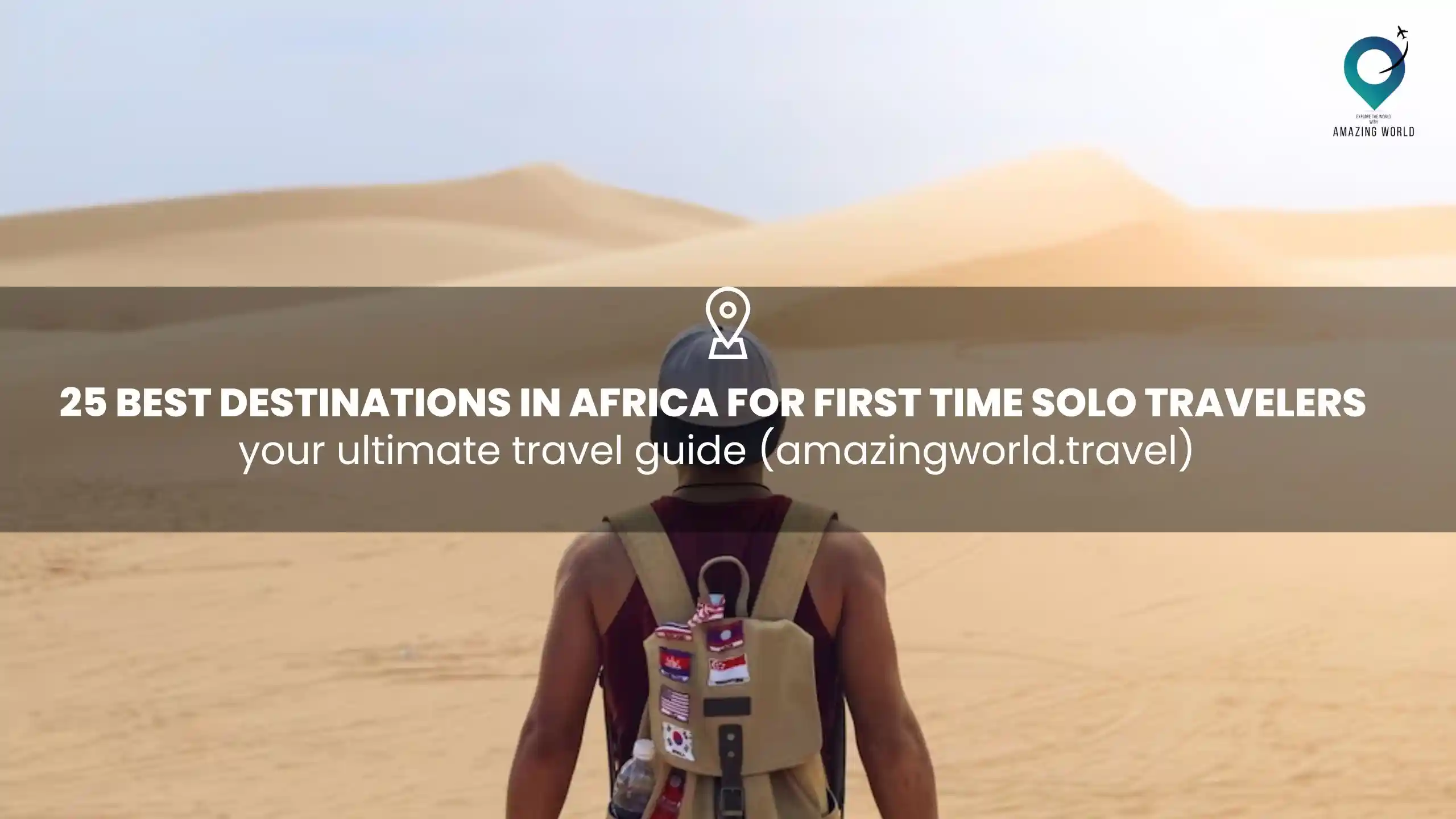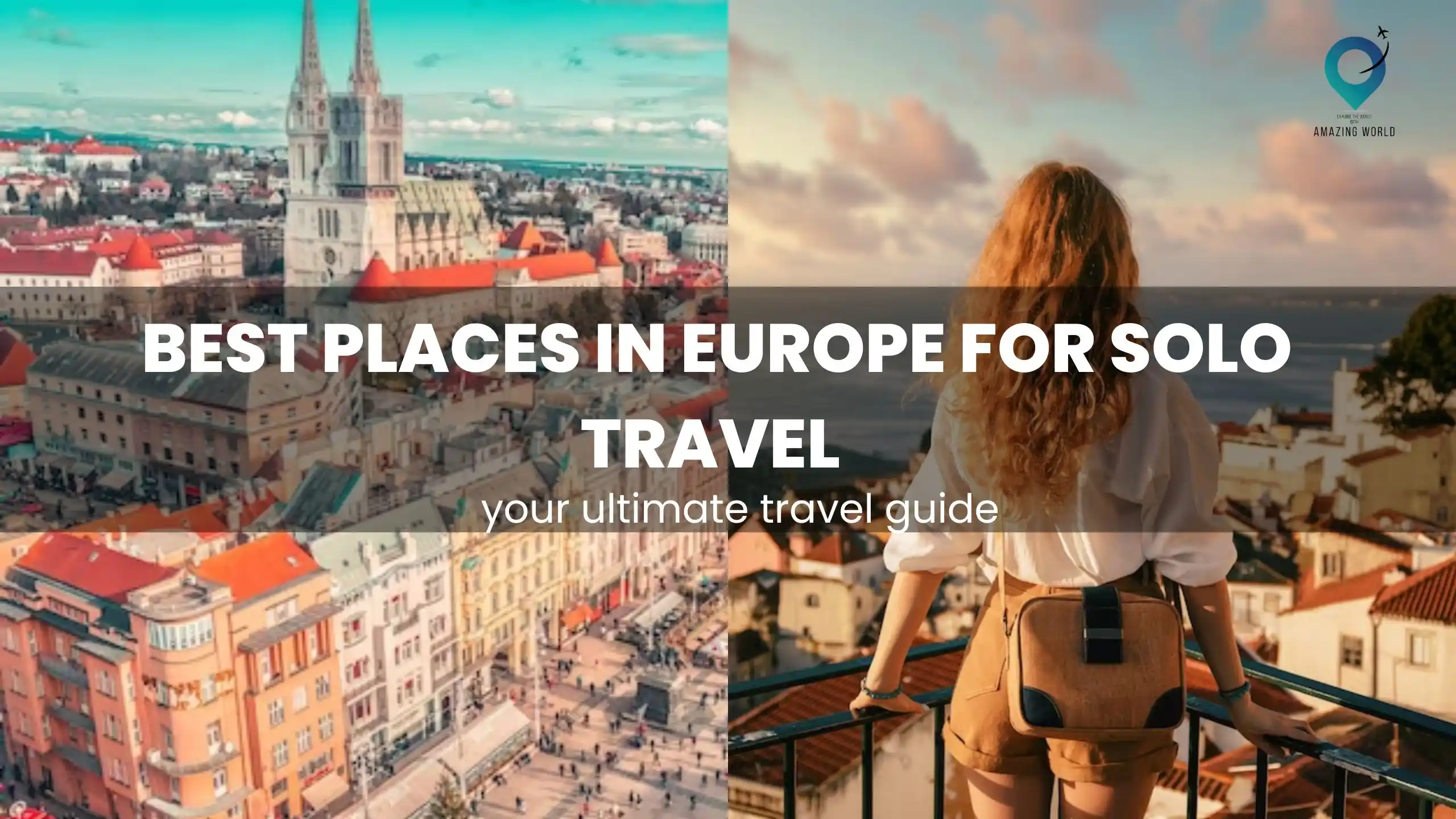25 Best Countries to Visit as Solo Travelers in 2023
Table of Contents
ToggleSolo travel is a growing trend in the travel industry and is becoming increasingly popular among travelers worldwide. It is a unique and rewarding way to explore the world on your terms, allowing you to set your module, choose your destinations and activities, and make your own memories.
The rise in solo travel can be attributed to several factors, including the growing number of single people, the increasing number of people who are prioritizing travel over other expenses, and the desire to escape from the stresses of everyday life. Many people are also looking for a way to challenge themselves, step out of their comfort zone, and gain a sense of independence.
Furthermore, advancements in technology and the growth of social media have made it easier for people to connect with other travelers and share their experiences, making solo travel a more accessible and safe option than ever before. With so many resources available, including online travel guides, travel blogs, and social media groups, it’s easier to plan a solo trip and find advice on everything from transportation to accommodations to safety.
Solo travel offers numerous benefits, including the freedom to explore new places, meet new people, and gain a sense of independence and self-confidence. It also allows travelers to immerse themselves in local cultures and traditions, try new foods, and experience unique adventures that they might not be able to do in a group setting.
Top 25 Most visited countries for Solo Travellers
1. Japan

- Tokyo: the capital city of Japan, known for its modern architecture, bustling streets, and vibrant nightlife.
- Kyoto: the former capital of Japan, known for its traditional temples, shrines, and gardens.
- Mount Fuji: the highest mountain in Japan and a symbol of Japan’s natural beauty.
Most known for:
- Unique culture: Japan has a unique culture that is known for its food, art, fashion, and technology.
- Natural beauty: Japan is home to stunning natural beauty, including cherry blossom trees, hot springs, and Mount Fuji.
- Politeness and respect: Japanese people are known for their polite and respectful behavior.
Best way to commute:
- Train or subway: Japan has an extensive and efficient train and subway system that is the best way to get around the country.
Country safety ranking
Japan is considered one of the safest countries in the world with a low crime rate and a high standard of living.
Per day cost or 7-day complete trip cost:
- The per-day cost in Japan can vary depending on the traveler’s budget, but on average, it can range from $70 to $150 per day.
- A 7-day complete trip cost can range from $1,000 to $2,500, depending on the type of accommodations, food, and activities.
Best time to visit:
The best time to visit Japan is during the spring (March to May) when the cherry blossom trees are in full bloom, or in the fall (September to November) when the weather is mild and the leaves are changing colors.
Things to avoid:
- Avoid being loud or disruptive in public places.
- Avoid tipping as it is not customary in Japan.
- Avoid smoking in public places as it is prohibited in many areas.
Things to do:
- Visit the temples and shrines in Kyoto.
- Try traditional Japanese food such as sushi, ramen, and tempura.
- Attend a sumo wrestling tournament or a tea ceremony.
Some travel tips:
- Learn a few basic Japanese phrases before your trip.
- Bring cash as many places do not accept credit cards.
- Follow the local customs and etiquette to show respect for the culture.
- Affordability rating or ranking:
- Japan can be considered a moderate to expensive travel destination, with a high cost of living and expensive accommodations.
Pros and cons:
Pros:
- Unique culture and traditions.
- Safe and clean environment.
- Efficient transportation system.
- Beautiful natural scenery.
Cons:
- High cost of living and expensive accommodations.
- Language barrier for non-Japanese speakers.
- Limited vegetarian and vegan food options.
2. Italy
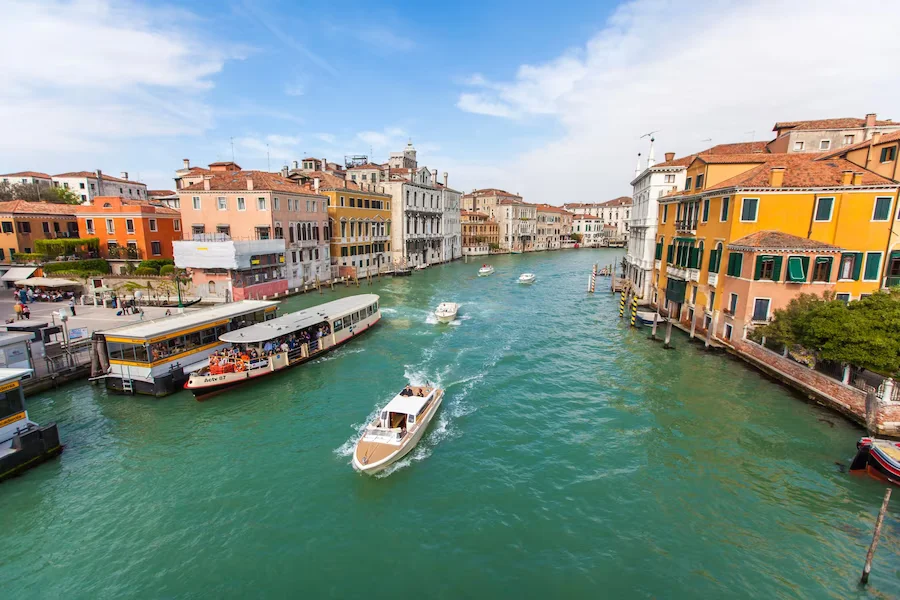
Italy is a country in Southern Europe known for its beautiful architecture, art, history, fashion, and cuisine. It is a popular destination for solo travelers and offers plenty of options for exploring and experiencing Italian culture.
Famous Places:
Italy has many famous places to visit including the Colosseum in Rome, the Leaning Tower of Pisa, the canals of Venice, the Duomo in Florence, the Amalfi Coast, the ruins of Pompeii, and the Vatican City.
Most known for:
Italy is most known for its rich history, art, and architecture, as well as its world-renowned cuisine and wine. It is also a fashion hub and home to some of the most iconic fashion houses in the world.
Best way to commute:
The best way to commute in Italy is by train. Italy has an extensive rail network that connects all major cities and towns, and the trains are fast, comfortable, and affordable.
Country Safety ranking:
Italy is generally a safe country for tourists, but like any other country, it is important to take precautions to avoid becoming a victim of crime. The crime rate in Italy is generally low, but pickpocketing and theft are common in tourist areas.
Per-day cost or 7-day complete trip cost:
- The average cost of a solo trip to Italy can range from $100 to $200 per day, depending on the type of accommodation, transportation, and activities.
- A 7-day trip can cost around $1,000 to $1,500, including accommodation, food, transportation, and activities.
Best time to visit:
The best time to visit Italy is in the spring (April to June) and fall (September to November) when the weather is mild, and the crowds are thinner. Summer is the peak tourist season, and it can be crowded and hot, while winter can be cold and rainy.
Things to avoid:
Tourists should avoid eating at restaurants near major tourist attractions as they tend to be overpriced and serve low-quality food. It is also important to be cautious of pickpockets and theft in crowded areas and to keep an eye on personal belongings at all times.
Things to do:
Some of the best things to do in Italy include visiting historic landmarks, exploring museums and galleries, trying authentic Italian cuisine, going on a wine-tasting tour, shopping for high-end fashion, and taking a gondola ride in Venice.
Some travel tips:
Italians are generally friendly and hospitable, but it is important to learn some basic Italian phrases to communicate with locals. It is also important to dress appropriately when visiting religious sites, such as the Vatican, and to respect local customs and traditions.
Affordability rating or ranking:
Italy is a moderately affordable country for solo travelers, with a range of accommodation options to suit different budgets. Food and transportation are also reasonably priced, making it a popular destination for budget travelers.
Pros and cons:
Pros of visiting Italy include its rich history and culture, world-renowned cuisine and wine, stunning scenery, and many famous landmarks and attractions.
Cons include the high tourist crowds in peak season, the risk of theft and pickpocketing, and the higher cost of some tourist activities and accommodations.
3. Iceland
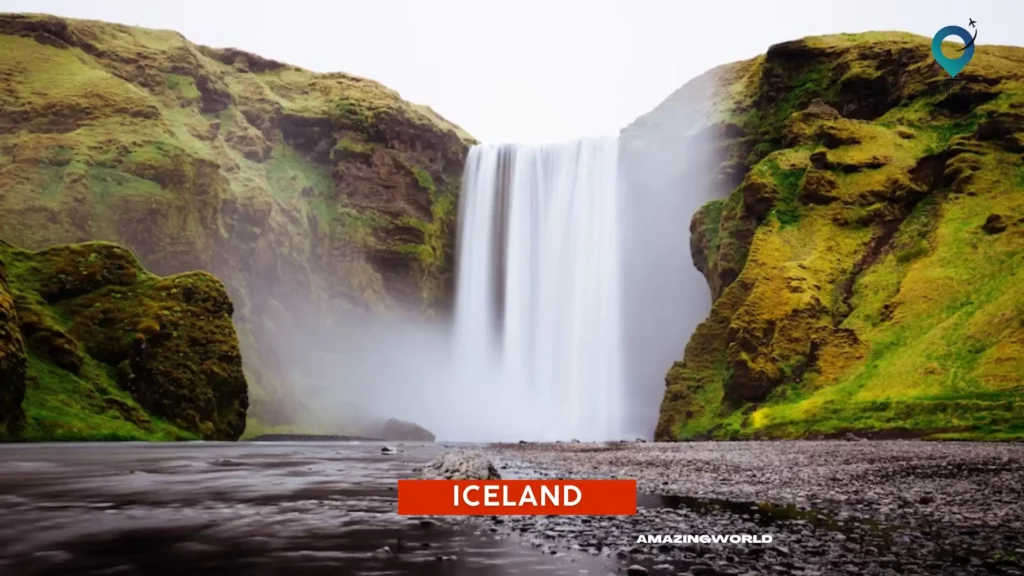
Iceland is a beautiful island country located in the North Atlantic Ocean, known for its rugged landscapes, geothermal hot springs, stunning waterfalls, and active volcanoes. It is a popular destination for solo travelers who are seeking adventure, outdoor activities, and breathtaking scenery.
Famous places in Iceland:
- The Blue Lagoon: a geothermal spa located in a lava field
- Gullfoss: a stunning waterfall that drops into a canyon
- Jökulsárlón: a glacial lagoon with icebergs floating on it
- The Golden Circle: a popular route that includes Þingvellir National Park, Geysir Geothermal Area, and Gullfoss waterfall
- Vatnajökull National Park: Iceland’s largest national park, featuring glaciers, volcanoes, and geothermal activity
Most known for:
Iceland is known for its stunning natural beauty, including glaciers, waterfalls, hot springs, and volcanoes. It’s also known for the Northern Lights, which can be seen in the winter months.
Best way to commute:
The best way to get around Iceland is by renting a car or joining a guided tour. Public transportation is limited, and many of the country’s most popular attractions are located in remote areas.
Country Safety ranking:
Iceland is considered to be one of the safest countries in the world. It has a low crime rate and is known for its friendly and helpful locals.
Per day cost or 7-day complete trip cost:
- Iceland can be a bit expensive, with the average cost of a meal ranging from $15 to $30 USD. Accommodations can also be pricey, with a budget hotel room costing around $100 USD per night.
- A 7-day trip to Iceland can cost anywhere from $1,500 to $3,000 USD, depending on your travel style and accommodations.
Best time to visit:
The best time to visit Iceland is during the summer months (June-August) when the weather is mild and the days are long. However, the winter months (November-March) are also popular for seeing the Northern Lights.
Things to avoid:
Travelers should avoid getting too close to the edge of cliffs or waterfalls, as the wind can be unpredictable. It’s also important to respect the country’s natural resources, such as hot springs and geysers, and follow all posted signs and regulations.
Things to do:
- Visit the Blue Lagoon
- Explore Reykjavik, Iceland’s capital city
- Take a glacier hike or ice cave tour
- Go whale watching
- Visit the Golden Circle
- See the Northern Lights
Some travel tips:
- Pack warm clothing, even if you’re visiting in the summer
- Bring a waterproof jacket and shoes
- Rent a 4×4 vehicle if you plan on driving on gravel roads
- Book accommodations in advance, especially if you’re traveling during peak season
- Be prepared for changing weather conditions
Affordability rating or ranking:
Iceland is considered to be a more expensive travel destination, but there are ways to save money, such as staying in hostels or camping, cooking your own meals, and renting a car instead of joining guided tours.
Pros:
- Stunning natural beauty
- Friendly locals
- Safe destination
- Unique experiences, such as visiting ice caves and seeing the Northern Lights
Cons:
- Can be expensive
- Limited public transportation
- Weather can be unpredictable
4. Thailand

Thailand is a beautiful country in Southeast Asia that is known for its stunning beaches, ancient temples, delicious food, and vibrant nightlife. It’s a popular destination for solo travelers because of its affordability, friendly locals, and diverse range of activities. Here’s a detailed overview of Thailand:
Famous Places:
- Thailand is home to many famous places, including Bangkok, Phuket, Chiang Mai, and the islands of Koh Samui, Koh Phangan, and Koh Tao.
- Bangkok is the capital city and is known for its vibrant street life, shopping centers, and ancient temples like Wat Phra Kaew and Wat Pho.
- Phuket is a popular beach destination with stunning scenery and a wide range of water sports and nightlife options.
- Chiang Mai is a cultural hub with ancient temples, markets, and opportunities for trekking and adventure activities.
Most Known For:
Thailand is most known for its beautiful beaches, delicious cuisine, and welcoming culture. It’s also known for its temples and ancient ruins, such as those found in Ayutthaya and Sukhothai.
Best Way to Commute:
The best way to commute in Thailand is by using public transportation, such as buses, trains, and tuk-tuks. Taxis and motorbike rentals are also available in most cities.
Country Safety Ranking:
Thailand is generally safe for travelers, but it’s always important to be aware of your surroundings and take precautions against pickpocketing and scams. The country has a safety ranking of 5 out of 5 on the Global Peace Index.
Per Day Cost or 7-Day Complete Trip Cost:
- Thailand is a very affordable destination, with a daily budget of around $20-$30 for backpackers and $50-$100 for mid-range travelers.
- A 7-day trip to Thailand can cost around $500-$1000 depending on your travel style.
Best Time to Visit:
The best time to visit Thailand is between November and February when the weather is cool and dry. March to May is hot and dry, while June to October is the rainy season.
Things to Avoid:
Visitors should avoid getting involved in drugs and other illegal activities. They should also be aware of the strict laws related to the monarchy, and avoid any actions that could be seen as disrespectful.
Things to Do:
Some of the top things to do in Thailand include visiting temples and ancient ruins, exploring the islands and beaches, trying delicious street food, and experiencing the vibrant nightlife.
Some Travel Tips:
It’s important to dress modestly when visiting temples and other religious sites. Visitors should also be aware of the local customs and traditions and be respectful of the local culture.
Affordability Rating or Ranking:
Thailand is one of the most affordable destinations in the world, with a low cost of living and inexpensive transportation and accommodation options.
Pros and Cons:
- The pros of traveling to Thailand include its affordability, friendly locals, and diverse range of activities.
- However, the cons include issues with air pollution and overcrowding in popular tourist destinations. Visitors should also be aware of the potential for scams and pickpocketing in busy areas.
5. Australia
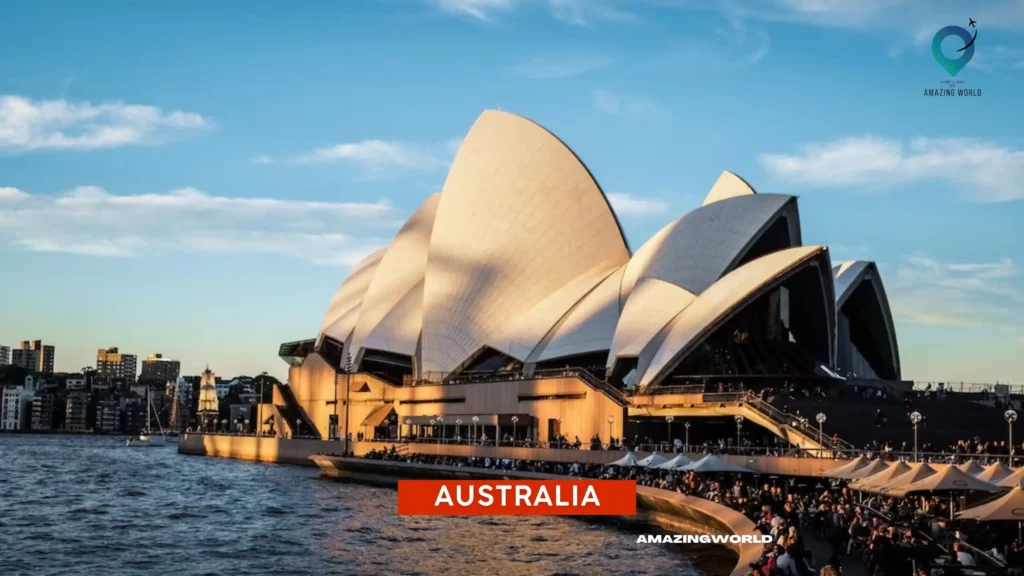
Australia is a vast and diverse country that offers plenty of opportunities for solo travel. From bustling cities to stunning beaches, to the rugged Outback, Australia has something for everyone. Here is a breakdown of the key points to consider when planning a solo trip to Australia:
Famous Places:
- Sydney Opera House and Harbour Bridge
- Great Barrier Reef
- Uluru (Ayers Rock)
- Bondi Beach
- Melbourne’s street art and laneways
- The Whitsunday Islands
- Kakadu National Park
Most Known For:
- Beautiful beaches and coastal landscapes
- Unique wildlife, such as kangaroos and koalas
- Indigenous Culture and History
- World-class cities and dining experiences
- Outdoor activities such as surfing, hiking, and camping
- The Great Barrier Reef and the diverse marine life it supports
Best Way to Commute:
Australia has an extensive network of buses, trains, and domestic flights that make it easy to get around the country. However, driving is also a popular option for those who want to explore more remote areas or the Outback.
Country Safety Ranking:
Australia is generally considered a safe country for travelers, with a low crime rate and excellent healthcare facilities.
Per Day Cost or 7-Day Complete Trip Cost:
Australia can be quite expensive, with accommodation, food, and activities costing more than in other countries. On average, a budget traveler can expect to spend around AUD $70-100 per day, while a more comfortable trip can cost upwards of AUD $200 per day.
Best Time to Visit:
The best time to visit Australia depends on where you plan to go and what you want to do. Generally, the best time to visit the coastal regions is from December to February, while the Outback and northern regions are best visited from May to September.
Things to Avoid:
- Swimming on unpatrolled beaches or in areas where there are signs of crocodiles or jellyfish
- Not respecting the indigenous culture and sacred sites
- Not wearing sunscreen and a hat in the strong Australian sun
- Not being prepared for the heat and humidity, especially in the summer months
Things to Do:
- Visit the Sydney Opera House and Harbour Bridge
- Explore the Great Barrier Reef
- Hike around Uluru (Ayers Rock)
- Relax on Bondi Beach
- Take a road trip along the Great Ocean Road
- Go on a wildlife tour to see kangaroos and koalas
- Learn about indigenous culture and history
Some Travel Tips:
- Be prepared for long distances and plan your itinerary accordingly
- Respect the Australian culture and environment
- Always wear sunscreen and a hat, and carry water with you
- Take advantage of public transportation to save money
- Book accommodations and activities in advance during peak travel seasons
Affordability Rating or Ranking:
Australia is considered a moderately expensive country for travelers, but there are ways to save money, such as staying in hostels or cooking your meals instead of eating out.
Pros and Cons:
Pros:
- Beautiful natural landscapes and unique wildlife
- World-class cities and dining experiences
- Friendly locals and a welcoming culture
- Safe and well-developed infrastructure
Cons:
- High cost of living and travel expenses
- Long distances between attractions and cities
- Extreme weather conditions in some areas, such as heat and humidity in the summer and bushfires in the dry season.
6. Costa Rica
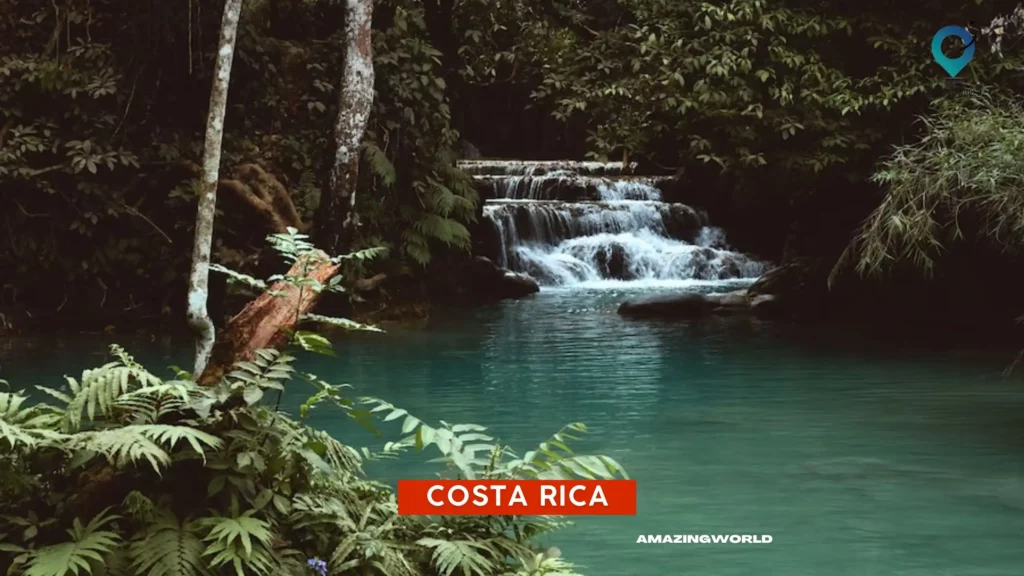
Costa Rica is a popular destination for solo travelers due to its stunning natural beauty, vibrant culture, and reputation for safety. Here’s a breakdown of what you can expect when traveling to Costa Rica:
Famous Places:
Arenal Volcano National Park: Home to one of the most active volcanoes in Central America, Arenal is a top destination for hiking, hot springs, and wildlife viewing.
- Manuel Antonio National Park: Known for its white sand beaches, clear blue waters, and diverse range of flora and fauna, Manuel Antonio is a must-visit for nature lovers.
- Monteverde Cloud Forest Reserve: A unique ecosystem where misty cloud forests meet the sky, Monteverde is perfect for hiking, zip-lining, and bird-watching.
- Tortuguero National Park: A protected area on the Caribbean coast that’s home to a variety of sea turtles, monkeys, and other wildlife.
Most known for:
Costa Rica is known for its beautiful beaches, lush rainforests, and friendly locals. It’s also a popular destination for eco-tourism and adventure activities such as zip-lining, white-water rafting, and surfing.
Best way to commute:
The best way to get around Costa Rica is by renting a car or taking local buses. Taxis and shuttles are also available for shorter distances, but they can be more expensive.
Country safety ranking:
Costa Rica is generally considered a safe country for travelers. Petty theft can be a problem in tourist areas, so it’s important to take precautions such as not carrying too much cash and being aware of your surroundings.
Per day cost or 7-day complete trip cost:
Costs in Costa Rica can vary depending on the time of year and the type of accommodations and activities you choose. On average, a budget traveler can expect to spend around $50-60 USD per day, while a mid-range traveler can expect to spend around $80-100 USD per day.
A 7-day trip to Costa Rica can cost anywhere from $500-1500 USD depending on your travel style.
Best time to visit:
The best time to visit Costa Rica is during the dry season, which runs from December to April. This is when you’ll have the best chance of sunny days and clear skies. However, the green season (May to November) can also be a good time to visit, as prices are lower and there are fewer crowds.
Things to avoid:
When traveling in Costa Rica, it’s best to avoid leaving your belongings unattended or walking alone at night in urban areas. It’s also important to avoid touching or disturbing wildlife in national parks.
Things to do:
Some of the top activities to do in Costa Rica include surfing, zip-lining, hiking, white-water rafting, and wildlife watching. You can also visit coffee plantations, relax in hot springs, and take cultural tours.
Some travel tips:
- Learn some basic Spanish before you go to help you communicate with locals.
- Make sure to pack comfortable shoes and clothes for outdoor activities.
- Bring a waterproof jacket and umbrella, as rain is common in Costa Rica.
- Use insect repellent to avoid mosquito bites, which can transmit diseases such as dengue fever.
Affordability rating or ranking:
Costa Rica is considered a mid-range travel destination, with costs that are higher than some other countries in Central America but lower than many destinations in Europe or North America.
Pros:
- Beautiful natural scenery and a diverse range of activities.
- Friendly and welcoming locals.
- Good infrastructure for tourism.
Cons:
- Can be more expensive than in some other Central American countries.
- Crowds can be a problem in popular tourist destinations.
- Language barriers can be a challenge for some travelers.
7. Portugal
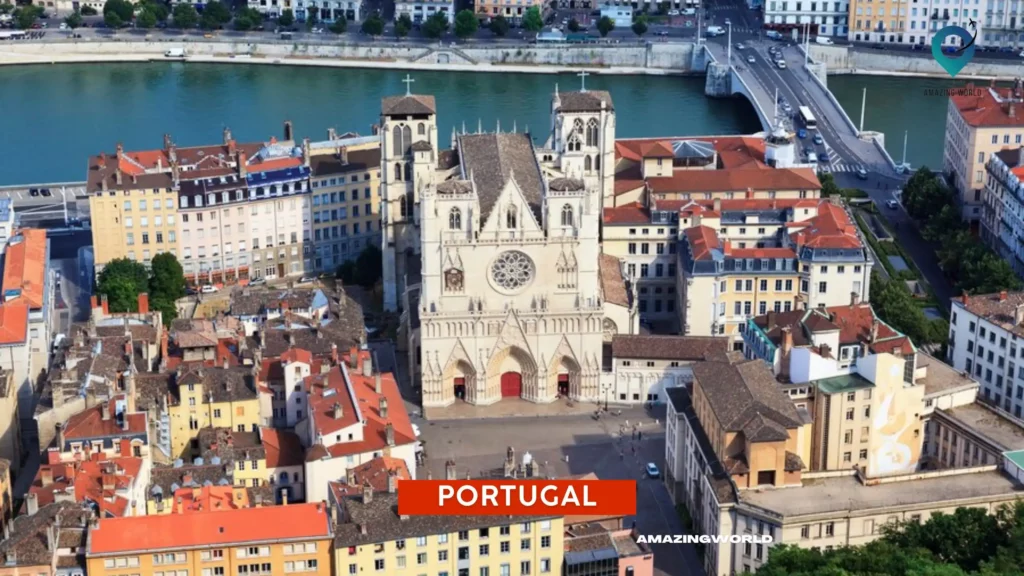
Portugal is a small but beautiful country located on the Iberian Peninsula in southwestern Europe. Here are the details about the country:
Famous places:
- Portugal is known for its beautiful beaches, historic landmarks, and stunning architecture. Some of the famous places in Portugal are:
- Lisbon: The capital city of Portugal with a rich history, stunning architecture, and delicious food.
- Porto: Famous for its wine, charming streets, and beautiful riverfront.
- Algarve: A popular tourist destination with beautiful beaches and scenic coastline.
- Sintra: A picturesque town with stunning palaces, gardens, and castles.
Most known for:
Portugal is known for its wine, especially Port wine, seafood, and beautiful beaches.
Best way to commute:
The best way to commute in Portugal is by public transportation, such as trains, buses, and trams. Taxis and rental cars are also available.
Country Safety ranking:
Portugal is considered a safe country with a low crime rate. It is ranked 3rd on the Global Peace Index 2021.
Per day cost or 7-day complete trip cost:
The average daily cost in Portugal is around 70-100 euros, depending on the type of accommodation and activities. A 7-day trip to Portugal can cost around 700-1000 euros per person.
Best time to visit:
The best time to visit Portugal is from March to May or September to November when the weather is pleasant, and the tourist crowds are lower.
Things to avoid:
Tourists should avoid carrying too much cash, leaving their belongings unattended, and walking alone in isolated areas at night.
Things to do:
Some of the things to do in Portugal are visited historic landmarks, enjoy the beaches, explore the charming towns, try the local cuisine, and taste the wine.
Some travel tips:
Tourists should learn some basic Portuguese phrases, carry a map, and dress appropriately when visiting religious sites. They should also be aware of pickpocketing and avoid tourist scams.
Affordability rating or ranking:
Portugal is considered an affordable destination compared to other Western European countries. It is ranked 12th on the Backpacker Index 2023.
Pros:
- The rich history and stunning architecture
- Beautiful beaches and coastline
- Delicious food and wine
- Affordable compared to other Western European countries
Cons:
- Crowded during peak tourist season
- Limited public transportation in some areas
- Not as much English is spoken compared to other European countries
8. Canada
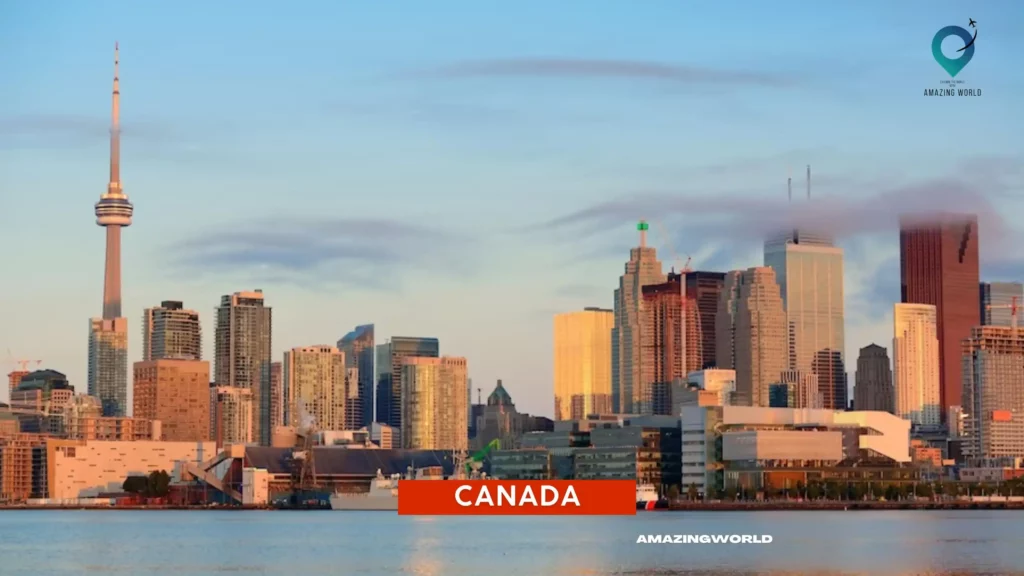
Canada is a vast country known for its natural beauty, diverse culture, and friendly locals. Here’s a breakdown of the different aspects of traveling to Canada:
Famous places:
Canada has many famous places, including Gala Falls, Banff National Park, Toronto’s CN Tower, the Canadian Rockies, Quebec City, and Vancouver’s Stanley Park.
Most known for:
Canada is known for its stunning landscapes, natural wonders, outdoor activities, multicultural cities, and friendly locals.
Best way to commute:
Canada has an extensive transportation system, including buses, trains, and flights, making it easy to travel between cities and provinces. Renting a car is also an excellent option for exploring more remote areas.
Country Safety ranking:
Canada has a high safety ranking and is considered one of the safest countries in the world.
Per day cost or 7-day complete trip cost:
Canada can be a relatively expensive destination, with a daily budget ranging from CAD 100-200.
A 7-day trip to Canada can cost anywhere between CAD 1,500-3,500, depending on your travel style and accommodation choices.
Best time to visit:
The best time to visit Canada depends on what you want to see and do. Summer is the peak tourist season, with warm weather and many festivals and events, while winter is perfect for skiing, snowboarding, and other winter sports.
Things to avoid:
While Canada is a relatively safe country, it’s still essential to be aware of your surroundings and avoid walking alone at night in unfamiliar areas. Also, be cautious of wildlife in more remote areas.
Things to do:
Canada offers endless opportunities for adventure and exploration. Some popular activities include hiking in national parks, skiing and snowboarding in the Rocky Mountains, visiting historic sites and museums, and experiencing the vibrant culture of cities like Toronto, Vancouver, and Montreal.
Travel tips:
Be sure to pack for the weather, as it can vary widely depending on where you’re going in Canada. Also, make sure you have a valid passport and any necessary visas or travel documents.
Don’t forget to try some of Canada’s famous cuisine, such as poutine, maple syrup, and Nanaimo bars.
Affordability rating or ranking:
Canada is generally considered a relatively expensive destination, but there are ways to travel on a budget, such as staying in hostels, cooking your meals, and taking advantage of free activities.
Pros and cons:
- Some pros of traveling to Canada include its natural beauty, friendly locals, and multicultural cities.
- However, some cons include the high cost of travel and accommodation, long distances between destinations, and potentially challenging weather conditions.
9. Spain
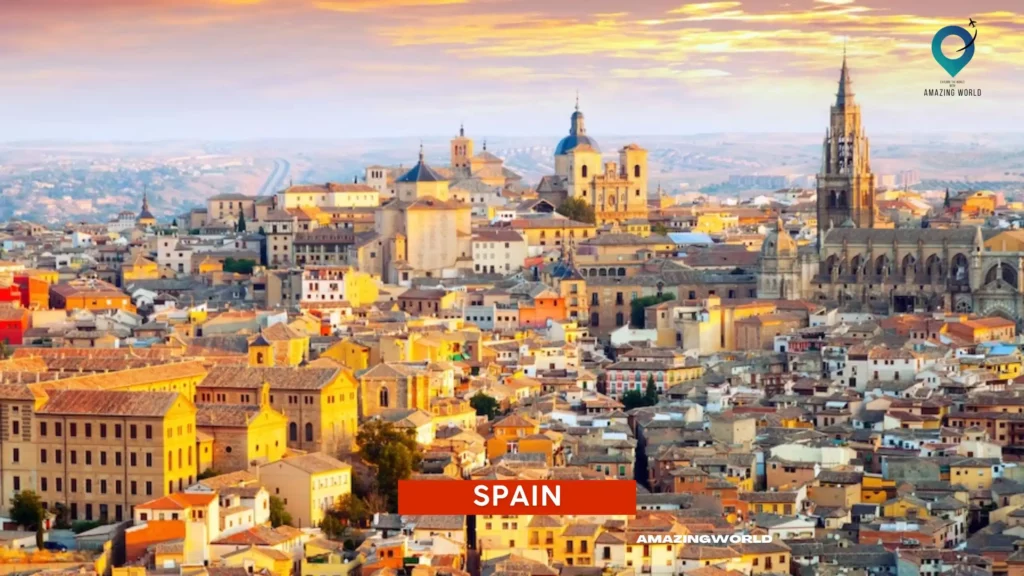
Famous places in that country:
- Spain is known for its rich cultural heritage, beautiful beaches, vibrant nightlife, and delicious cuisine. Some of the most famous places to visit in Spain are:
- Barcelona: Known for its unique architecture, including the iconic Sagrada Familia, Park Güell, and Casa Batlló.
- Madrid: The capital city of Spain, known for its beautiful parks, museums, and nightlife.
- Seville: Known for its beautiful architecture, including the Alcázar of Seville and the Cathedral of Seville.
- Granada: Known for the stunning Alhambra Palace and the beautiful Albaicín neighborhood.
- Valencia: Known for its beautiful beaches and futuristic City of Arts and Sciences.
Most known for:
Spain is known for its beautiful architecture, art, music, dance, food, and wine. It is also famous for its festivals, such as La Tomatina and Running of the Bulls.
Best way to commute:
The best way to commute within Spain is by train, as it is a fast, efficient, and affordable way to travel.
Buses and metro systems are also available in the major cities, and taxis are a convenient way to get around.
Country Safety ranking:
Spain is generally considered a safe country for travelers, with a low crime rate. However, tourists should always be aware of pickpocketing and theft, especially in crowded areas.
Per day cost or 7-day complete trip cost:
- The cost of traveling in Spain varies depending on the type of accommodation, transportation, and activities. On average, a budget traveler can expect to spend around €50-€80 per day, while mid-range travelers can expect to spend around €80-€150 per day.
- A 7-day trip to Spain can cost between €500-€1000 per person.
Best time to visit:
The best time to visit Spain is during the spring (March to May) and fall (September to November), when the weather is mild and the crowds are smaller. Summer (June to August) is the peak tourist season, with high temperatures and large crowds.
Things to avoid:
- Avoid leaving your valuables unattended or in plain sight.
- Be careful when withdrawing money from ATMs and avoid doing it at night or in isolated areas.
- Avoid drinking too much in public places, as it is illegal and can lead to fines.
Things to do:
- Visit the famous museums in Madrid, such as the Prado Museum and the Reina Sofia Museum.
- Explore the Gothic Quarter in Barcelona and visit the famous La Boqueria market.
- Attend a flamenco show in Seville.
- Visit the Alhambra Palace in Granada.
- Relax on the beaches in Valencia.
Some travel tips:
- Learn a few Spanish phrases to help you get by.
- Take advantage of the free tapas that come with drinks in many bars and restaurants.
- Keep a jacket handy, as the weather can be unpredictable.
- Book tickets to popular attractions in advance to avoid long lines.
Affordability rating or ranking:
Spain is considered an affordable travel destination, with a range of budget-friendly accommodations and dining options.
Pros and cons:
Pros:
- Beautiful architecture and cultural heritage.
- Delicious cuisine and wine.
- Vibrant nightlife.
- Affordable travel destination.
Cons:
- Crowds during peak tourist season.
- Pickpocketing and theft in crowded areas.
- Smoking is still common in public places.
10. New Zealand
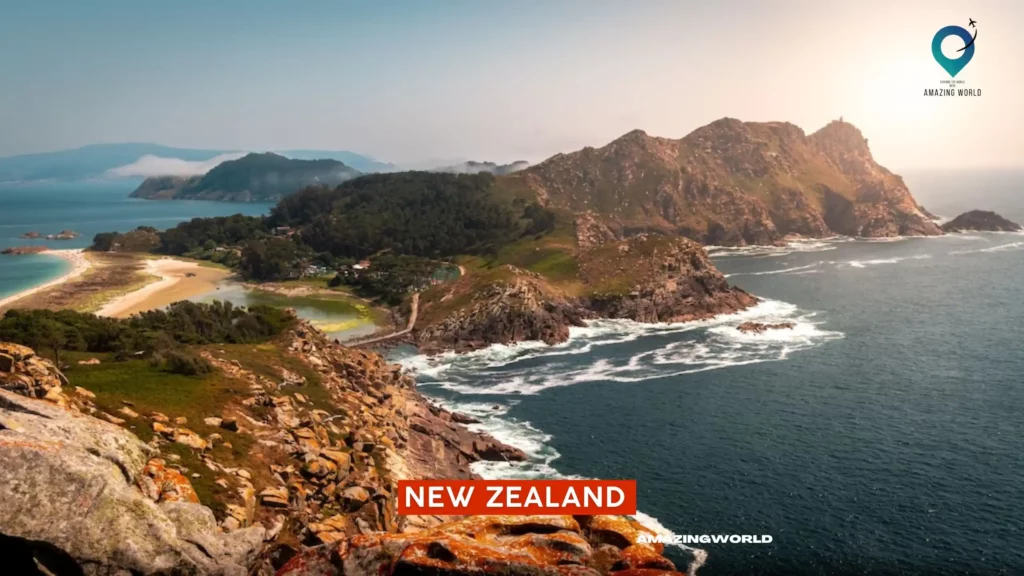
Famous places in New Zealand:
New Zealand is known for its stunning natural beauty and adventure sports. Some of the most famous places to visit include:
- Milford Sound: A stunning fjord in the Fiordland National Park that is known for its waterfalls, cliffs, and wildlife.
- Mount Cook: The highest peak in New Zealand, which offers breathtaking views and great hiking opportunities.
- Queenstown: A popular tourist town that offers a variety of adventure sports such as bungee jumping, skydiving, and skiing.
- Rotorua: Known for its geothermal activity, hot springs, and Maori culture.
- Abel Tasman National Park: A beautiful coastal park with golden sand beaches, crystal clear waters, and great hiking trails.
Most known for:
New Zealand is famous for its natural beauty, adventure sports, and friendly people. It’s also known for its Lord of the Rings filming locations and its Maori culture.
Best way to commute:
The best way to get around New Zealand is by renting a car or campervan. Public transportation is limited, especially outside of major cities, and many of the best sights are off the beaten path.
Country Safety ranking:
New Zealand is considered a safe country to visit, with low levels of crime and political instability.
Per day cost, or 7-day complete trip cost:
The cost of a trip to New Zealand can vary depending on the time of year and the type of accommodations and activities chosen. On average, budget travelers can expect to spend around NZD 100-150 per day, while mid-range travelers can expect to spend around NZD 200-300 per day.
Best time to visit:
The best time to visit New Zealand is during the summer months of December to February when the weather is warm and the days are long.
However, this is also the busiest time of year, so prices can be higher and attractions can be more crowded.
Spring (September to November) and autumn (March to May) can also be great times to visit, with fewer crowds and mild weather.
Things to avoid:
Visitors should be aware of the country’s strict biosecurity regulations, which prohibit the entry of many foods, plants, and animal products. Visitors should also respect Maori cultural sites and traditions.
Things to do:
- New Zealand offers a wide range of outdoor activities, from hiking and skiing to bungee jumping and skydiving. Some popular activities include:
- Hiking the Milford Track or one of the many other great hiking trails
- Skiing or snowboarding at one of the country’s many ski resorts
- Bungee jumping or skydiving in Queenstown
- Visiting Rotorua to see the geothermal activity and learn about Maori culture
- Taking a scenic drive along one of the many beautiful coastal roads
Some travel tips:
New Zealand is a relatively small country, but driving times can be longer than expected due to winding roads and scenic routes. Visitors should also be prepared for all types of weather, as it can change quickly and be unpredictable. Finally, visitors should be aware of the country’s strict drinking and driving laws.
Affordability rating or ranking:
New Zealand is generally considered a moderately expensive country to visit, but there are plenty of budget-friendly options available, such as hostels and camping.
It’s also possible to save money by cooking meals instead of eating out and choosing free or low-cost activities.
Pros and cons:
Pros:
- Stunning natural beauty and outdoor activities
- Friendly locals
- Safe and stable country
Cons:
- Can be expensive, especially during peak season
- Limited public transportation
- Long travel times between destinations.
11. Norway

Norway is a stunning country known for its breathtaking natural scenery, fjords, mountains, and northern lights. It is a popular destination for outdoor enthusiasts and adventure travelers. Here are some details about Norway based on the given points:
Famous Places:
Some of the famous places in Norway include the Fjords, the Northern Lights, Oslo (the capital city), Bergen (a picturesque city surrounded by mountains), Geirangerfjord, Preikestolen, and Lofoten Islands.
Most Known For:
Norway is most known for its natural beauty, fjords, northern lights, skiing, hiking, and fishing.
Best way to commute:
The best way to get around Norway is by train, bus, or car. Norway has a well-developed public transport system, and train journeys are very scenic.
Driving is also a good option as it allows you to explore the countryside at your own pace.
Country Safety Ranking:
Norway is considered one of the safest countries in the world, with a low crime rate and good healthcare facilities.
Per day cost or 7-day complete trip cost:
The average daily cost of traveling in Norway is around 100-150 USD, depending on your travel style and preferences.
A 7-day trip to Norway can cost around 1500-2000 USD.
Best time to visit:
The best time to visit Norway is during the summer months (June-August) when the weather is mild, and the days are long. It is also an excellent time for hiking and outdoor activities.
If you want to see the Northern Lights, visit during the winter months (November-February).
Things to avoid:
Norway is a relatively safe and easy-going country, and there aren’t many things to avoid.
However, be careful when driving as the roads can be narrow and winding in some areas.
Things to do:
Some of the top things to do in Norway include hiking in the mountains, exploring the fjords, skiing, watching the northern lights, visiting the coastal cities of Bergen and Trondheim, and taking a scenic train journey on the Flam Railway.
Some travel tips:
Norway can be an expensive destination, so plan your budget accordingly. Be sure to pack warm clothing, even in the summer, as the weather can be unpredictable.
If you’re driving, rent a small car as the roads can be narrow.
Affordability rating or ranking:
Norway is not considered a budget-friendly destination, with high prices for food, accommodation, and transport.
However, it is possible to travel to Norway on a budget by staying in hostels, cooking your meals, and using public transport.
Pros and cons:
- Some pros of traveling to Norway include the stunning natural scenery, friendly locals, and safe environment. However, the high cost of travel can be a significant downside for some travelers.
- Additionally, some areas of Norway can be quite remote, making transportation challenging.
12. Vietnam

Famous places:
Vietnam has numerous famous places that attract tourists from all over the world. Some of the most popular ones are:
- Ha Long Bay: A UNESCO World Heritage Site is known for its breathtaking natural scenery of limestone cliffs and caves.
- Hoi An: A beautiful ancient city with a well-preserved old town that showcases Vietnam’s history and culture.
- Ho Chi Minh City: The largest city in Vietnam, with a bustling urban atmosphere, museums, and famous landmarks such as the Independence Palace and Notre Dame Cathedral.
- Hue: The former imperial capital of Vietnam, with many historical sites and ancient temples.
- Sapa: A mountainous region in northern Vietnam known for its stunning rice terraces and cultural diversity.
Most known for:
Vietnam is known for its rich history, vibrant culture, beautiful natural landscapes, delicious cuisine, and warm hospitality.
Best way to commute:
The most common and convenient way to commute in Vietnam is by using a combination of trains, buses, taxis, and motorbikes. Domestic flights are also available for longer distances.
Country safety ranking:
Vietnam is generally considered a safe country for travelers. However, it is recommended to take standard precautions such as avoiding walking alone at night and keeping valuables secure.
Per-day cost or 7-day complete trip cost:
- The cost of traveling to Vietnam varies depending on the type of accommodation, mode of transportation, and activities. On average, a budget traveler can expect to spend around $25-$35 per day, while a mid-range traveler may spend around $50-$100 per day.
- A 7-day complete trip to Vietnam may cost anywhere between $300-$1500 depending on the itinerary.
Best time to visit:
The best time to visit Vietnam is from November to April when the weather is cooler and drier, making it ideal for outdoor activities and sightseeing.
Things to avoid:
- Travelers should avoid carrying large amounts of cash or valuable items, as petty theft can occur in crowded areas.
- It is also advisable to avoid drinking tap water and be cautious while crossing the streets as traffic can be chaotic.
Things to do:
- There are plenty of things to do in Vietnam, including:
- Exploring the stunning natural beauty of Ha Long Bay, Sapa, and the Mekong Delta.
- Visiting historical and cultural sites such as the Imperial Citadel of Thang Long, Ho Chi Minh’s Mausoleum, and the Cu Chi Tunnels.
- Sampling delicious Vietnamese cuisines such as pho, banh mi, and fresh seafood.
- Shopping for handicrafts, textiles, and souvenirs in local markets.
Some travel tips:
It is advisable to carry good sunscreen and insect repellent as the weather can be hot and humid, and mosquitoes are prevalent in some areas. Bargaining is common in local markets, so travelers should be prepared to negotiate prices.
It is also recommended to learn a few basic phrases in Vietnamese to communicate with locals.
Affordability rating or ranking:
Vietnam is generally considered an affordable destination for travelers, with low-cost accommodations, food, and transportation options.
Pros and cons:
Pros:
- Rich history and culture
- Beautiful natural landscapes
- Delicious cuisine
- Warm hospitality
- Affordable prices
Cons:
- Crowded tourist areas
- Chaotic traffic in cities
- Petty crime in some areas
- Language barrier for non-Vietnamese speakers.
13. Ireland
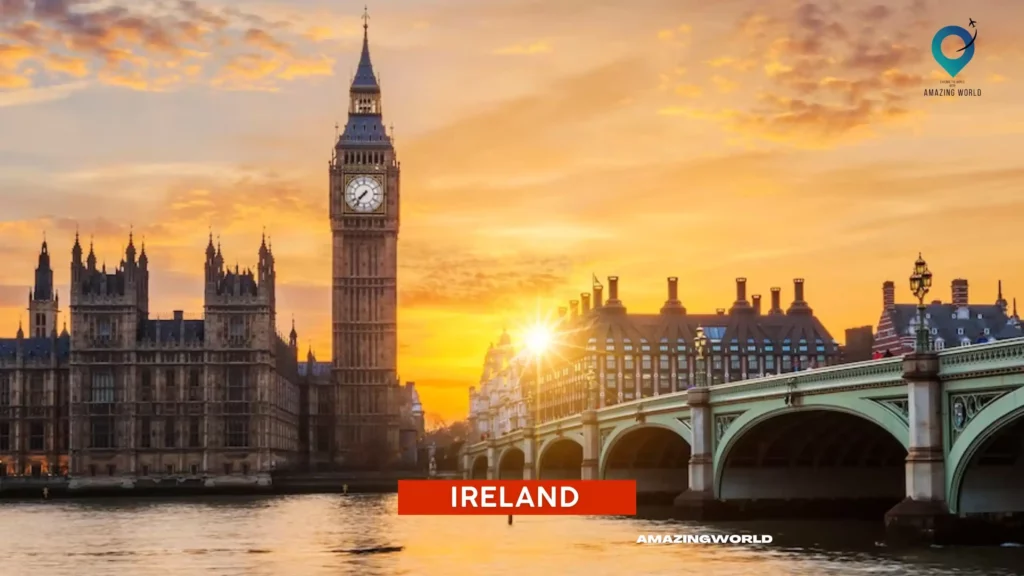
Famous Places:
- Cliffs of Moher: A popular natural attraction located on the west coast of Ireland, towering 214 meters above the Atlantic Ocean.
- Ring of Kerry: A scenic driving route through the southwest of Ireland, offering views of stunning landscapes, historic landmarks, and charming villages.
- Dublin: The capital city of Ireland, known for its lively atmosphere, historic landmarks, and cultural attractions such as the Guinness Storehouse and Trinity College.
- Giant’s Causeway: A unique geological formation on the north coast of Ireland, consisting of thousands of interlocking basalt columns.
- Killarney National Park: A natural wonderland located in County Kerry, home to mountains, lakes, waterfalls, and abundant wildlife.
Most known for:
Ireland is known for its stunning natural landscapes, rich history and culture, friendly people, and iconic symbols such as the Cliffs of Moher, Guinness beer, and traditional Irish music.
Best way to commute:
The best way to commute around Ireland is by car or public transportation. The train and bus networks in Ireland are extensive and affordable, with options such as the Dublin Bus Tour or the Railtours Ireland First Class Tour.
Country Safety Ranking:
Ireland is generally considered a safe country to travel to, with a low crime rate and a friendly population. However, it is always important to take precautions and be aware of your surroundings, especially in crowded tourist areas.
Per-day cost or 7-day complete trip cost:
The cost of traveling in Ireland can vary depending on factors such as accommodation, transportation, and activities. On average, a budget traveler can expect to spend around 50-70 EUR per day, while a mid-range traveler can expect to spend around 100-150 EUR per day.
A 7-day trip to Ireland can cost anywhere from 700-1500 EUR per person, depending on the level of accommodation and activities chosen.
Best time to visit:
The best time to visit Ireland is during the summer months (June-August), when the weather is mild and the days are long.
However, this is also the peak tourist season, so expect larger crowds and higher prices. Spring and fall are also good times to visit, with fewer tourists and lower prices.
Things to avoid:
It is best to avoid drinking tap water in Ireland, as it can sometimes cause stomach issues. It is also important to avoid political discussions or showing disrespect for Irish culture and traditions.
Things to do:
- Visit the Cliffs of Moher
- Explore Dublin’s historic landmarks and cultural attractions
- Drive the scenic Ring of Kerry route
- Experience traditional Irish music and dance
- Visit the Giant’s Causeway
- Go hiking in Killarney National Park
- Explore the stunning landscapes of Connemara
Travel tips:
- Pack warm and waterproof clothing, as the weather in Ireland, can be unpredictable.
- Rent a car or take public transportation to explore the country.
- Try traditional Irish cuisines, such as fish and chips, shepherd’s pie, and Irish stew.
- Don’t forget to visit a pub and try the Guinness beer.
- Be prepared for toll roads and parking fees.
- Carry a power adapter, as the plugs in Ireland are different from those in other countries.
Affordability rating or ranking:
Ireland can be considered a relatively expensive destination, especially during peak tourist season.
However, there are options for budget travelers, such as hostels and self-catering accommodations.
Pros and cons:
Pros:
Beautiful natural landscapes, rich history and culture, friendly people, great food and drink, easy to get around by public transportation.
Cons:
Expensive compared to some other European destinations
14. Switzerland
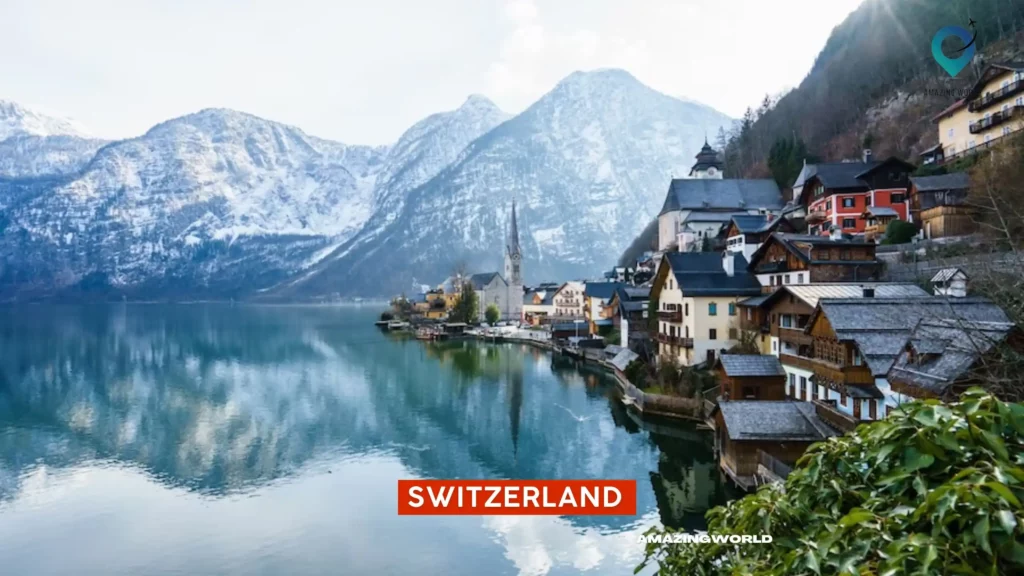
Famous places in Switzerland:
- Swiss Alps
- Lake Geneva
- Rhine Falls
- Jungfraujoch
- Lucerne
- Interlaken
- Zermatt and the Matterhorn
- Zurich
- Geneva
- Bern
Most known for:
Switzerland is known for its picturesque landscapes, including the Swiss Alps, lakes, and waterfalls. It is also famous for its cheese, chocolate, and watchmaking industry.
Additionally, the country is known for its efficient public transportation system and high standard of living.
Best way to commute:
The best way to commute in Switzerland is by train. The Swiss railway network is extensive and punctual and offers a comfortable and scenic way to travel around the country.
Buses and trams are also available in urban areas.
Country safety ranking:
Switzerland is one of the safest countries in the world, with a safety index ranking of 89.57 out of 100, according to Numbeo.
Per day cost, or 7-day complete trip cost:
Switzerland is a relatively expensive country to travel to. The average daily cost per person is around 200-300 Swiss Francs (approx. $220-330 USD), which includes accommodation, food, and transportation.
A 7-day trip to Switzerland can cost around 1,500-2,500 Swiss Francs (approx. $1,650-2,750 USD) per person.
Best time to visit:
The best time to visit Switzerland is during the summer months (June to August) when the weather is pleasant and the countryside is in full bloom.
The winter months (December to February) are also popular due to the country’s excellent skiing facilities.
Things to avoid:
- Avoid being loud and rowdy in public places, as this is considered impolite in Switzerland.
- Avoid littering or smoking in non-designated areas, as this is against the law.
- Avoid driving on the country’s narrow and winding mountain roads if you are not used to driving in such conditions.
Things to do:
- Explore the Swiss Alps and go hiking, skiing, or snowboarding.
- Take a scenic train ride through the countryside.
- Visit historical cities like Bern and Zurich.
- Enjoy Swiss cuisine, including cheese fondue, raclette, and chocolate.
- Go boating or swimming in one of Switzerland’s many lakes.
- Some travel tips related to Switzerland:
- Pack for all types of weather, as Switzerland’s weather can be unpredictable.
- Purchase a Swiss Pass or Swiss Travel Pass for discounted transportation and attraction entry.
- Always carry some cash, as not all establishments accept credit cards.
- Don’t forget to try the local Swiss wine, as the country is home to many excellent vineyards.
Affordability rating or ranking:
Switzerland is considered one of the most expensive countries in the world, with a high cost of living and high travel expenses.
Pros:
- Beautiful scenery and landscapes
- Efficient public transportation
- High standard of living
- Excellent food and drink
- Safe and secure country
Cons:
- High cost of living and travel expenses
- Language barriers in some areas, as Swiss German, French, and Italian are all spoken
- Crowds of tourists during peak season
15. Croatia
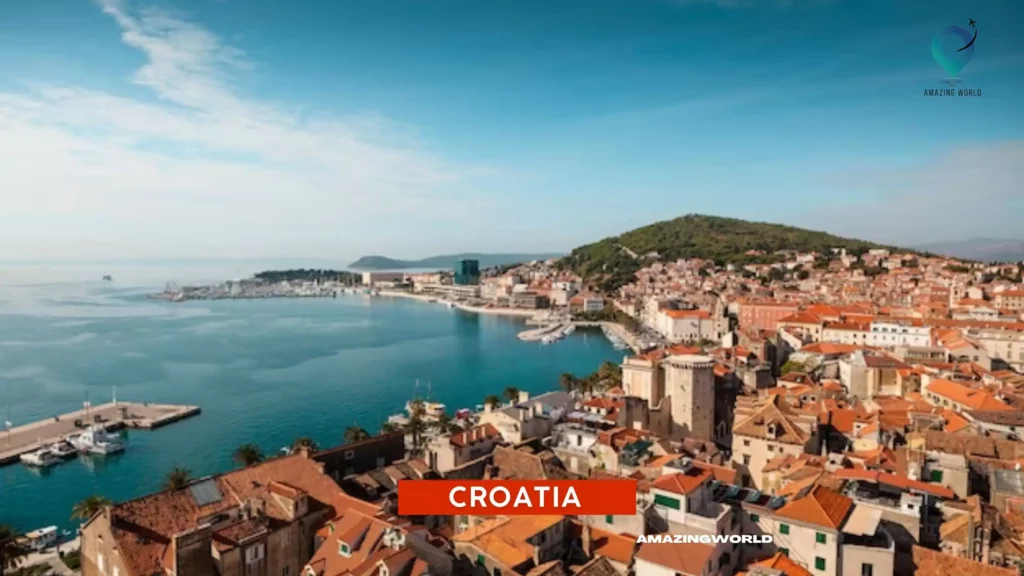
Famous Places:
- Dubrovnik: Known for its beautiful Old Town, ancient city walls, and stunning views of the Adriatic Sea.
- Plitvice Lakes National Park: A UNESCO World Heritage Site with a series of interconnected lakes and waterfalls.
- Split: Home to the famous Diocletian’s Palace, a historic Roman landmark and a UNESCO World Heritage Site.
- Hvar: An island is known for its beaches, nightlife, and lavender fields.
- Zagreb: The capital city with a historic Old Town, museums, and galleries.
Most Known For:
- Beautiful coastline with over 1,000 islands and islets, and crystal-clear waters.
- Rich history and architecture, with a blend of Roman, Venetian, and Austro-Hungarian influences.
- Delicious food and wine, including seafood, truffles, and local wines.
Best Way to Commute:
The best way to get around Croatia is by renting a car or using public transportation, which includes buses, trains, and ferries.
Country Safety Ranking:
Croatia is generally considered a safe country for tourists. The Global Peace Index ranks Croatia as the 28th safest country in the world.
Per Day Cost or 7-Day Complete Trip Cost:
The cost of travel in Croatia varies depending on your travel style and budget. On average, budget travelers can expect to spend around 300-500 HRK ($50-$80) per day, while mid-range travelers can expect to spend around 800-1,200 HRK ($130-$200) per day.
A 7-day trip to Croatia can cost anywhere from $600 to $2,000 or more, depending on your accommodation and activity choices.
Best Time to Visit:
The best time to visit Croatia is during the shoulder season months of May, June, September, and October when the weather is mild, and the crowds are smaller. July and August are the peak tourist season months when prices are higher, and the beaches and cities are more crowded.
Things to Avoid:
- Avoid visiting Dubrovnik during the peak tourist season when the crowds are the largest.
- Be cautious when using taxis, as some drivers may try to overcharge tourists.
Things to Do:
- Visit the Plitvice Lakes National Park and explore the beautiful lakes and waterfalls.
- Take a boat tour around the islands and islets off the coast.
- Explore the historic Old Town of Dubrovnik and walk along the city walls.
- Taste the local food and wine, including seafood, truffles, and local wines.
Some Travel Tips:
- Learn a few basic phrases in Croatian, as English is not widely spoken in some areas.
- Be sure to have cash on hand, as some smaller businesses may not accept credit cards.
- Bring comfortable shoes for walking around historic cities and national parks.
Affordability Rating or Ranking:
Croatia is generally considered an affordable destination compared to other European countries, especially for budget travelers.
Pros:
- Beautiful coastline and islands with crystal-clear waters.
- Rich history and architecture, with a blend of Roman, Venetian, and Austro-Hungarian influences.
- Delicious food and wine, including seafood, truffles, and local wines.
- Generally considered an affordable destination.
Cons:
- Peak tourist season (July and August) can be very crowded and expensive.
- English is not widely spoken in some areas.
16. Germany
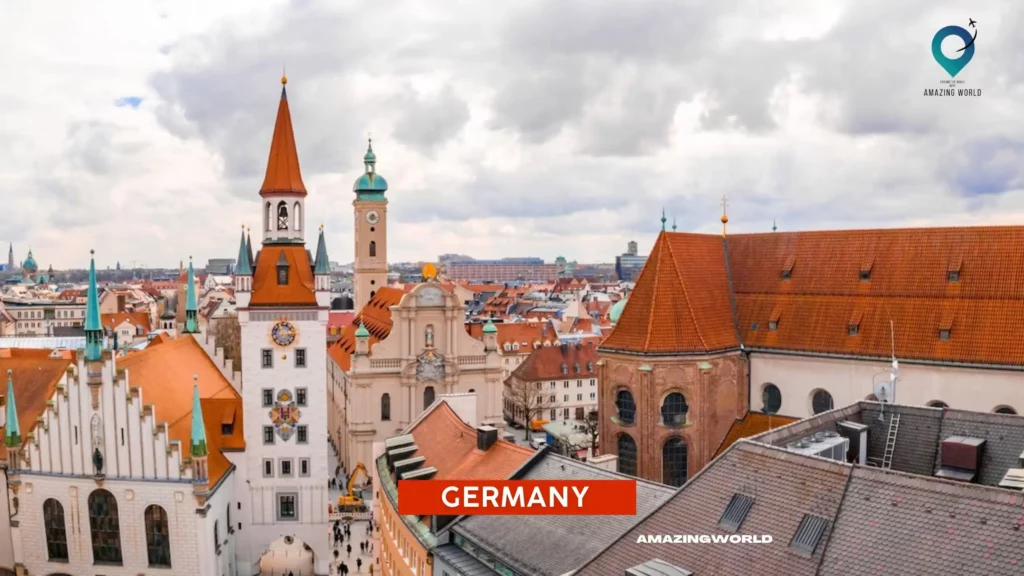
Famous places in Germany:
- Berlin: The capital city of Germany, known for its historical sites like the Berlin Wall and the Brandenburg Gate, as well as its vibrant nightlife.
- Munich: Known for its Oktoberfest celebrations and the famous Marienplatz square.
- Frankfurt: A financial hub with a stunning skyline and numerous museums and galleries.
- Cologne: Known for its stunning cathedral and vibrant nightlife.
- Hamburg: A port city with many museums, theaters, and a famous red-light district.
- Neuschwanstein Castle: A stunning 19th-century castle that served as inspiration for the Disney logo.
Most known for:
- Beer: Germany is known for its beer culture, with Oktoberfest being a famous example.
- Technology: Germany is known for producing high-quality technology, particularly in the automotive industry.
- History: Germany has a rich history, with many historical sites and landmarks.
- Soccer: Germany is known for its successful national soccer team and its passionate fans.
Best way to commute:
Germany has a well-developed transportation system with many options for getting around, including trains, buses, and trams.
The best way to commute depends on the specific city and destination, but public transportation is generally a reliable and affordable option.
Country Safety ranking:
Germany is considered a very safe country with a low crime rate. According to the 2021 Global Peace Index, Germany ranks 16th out of 163 countries.
Per day cost, or 7-day complete trip cost:
The cost of traveling in Germany can vary depending on factors like the season, location, and type of accommodation. On average, budget travelers can expect to spend around 50-70 EUR per day, while mid-range travelers can expect to spend around 100-150 EUR per day.
A 7-day trip can cost anywhere between 500-1500 EUR, depending on the itinerary.
Best time to visit:
The best time to visit Germany is in the summer months of June to August when the weather is warm and pleasant. However, this is also peak tourist season, so prices may be higher and crowds may be larger. Spring and autumn are also good times to visit, with mild weather and fewer tourists.
Things to avoid:
- Don’t jaywalk, as this is illegal and can result in a fine.
- Don’t make the Nazi salute or display other symbols related to the Third Reich, as this is illegal and can result in imprisonment.
- Don’t speak loudly or disturb others in public transportation or other public spaces.
Things to do:
- Visit the Berlin Wall and the Brandenburg Gate in Berlin.
- Attend Oktoberfest in Munich.
- Visit the Neuschwanstein Castle.
- Explore the Rhine Valley and its many castles.
- Visit the Christmas markets in various cities during the holiday season.
Some travel tips related to that country:
- Always carry cash, as some establishments may not accept credit cards.
- Bring a reusable water bottle, as tap water is safe to drink and readily available.
- Dress appropriately for the weather, as it can be unpredictable.
- Learn a few German phrases to make communicating with locals easier.
- Research the specific customs and etiquette of the region you will be visiting.
Affordability rating or ranking:
Germany is generally considered a moderately expensive destination, with prices varying depending on the location and season.
According to Numbeo, Germany has a cost-of-living index of 65.98, making it more expensive than many other European countries, but cheaper than places like the UK and Scandinavia.
Pros and cons:
- Some pros of visiting Germany include its rich history and culture, efficient public transportation, and diverse cuisine.
- Some cons include the language barrier (German is the primary language spoken), high prices in some areas, and strict adherence to rules and regulations.
17. Greece
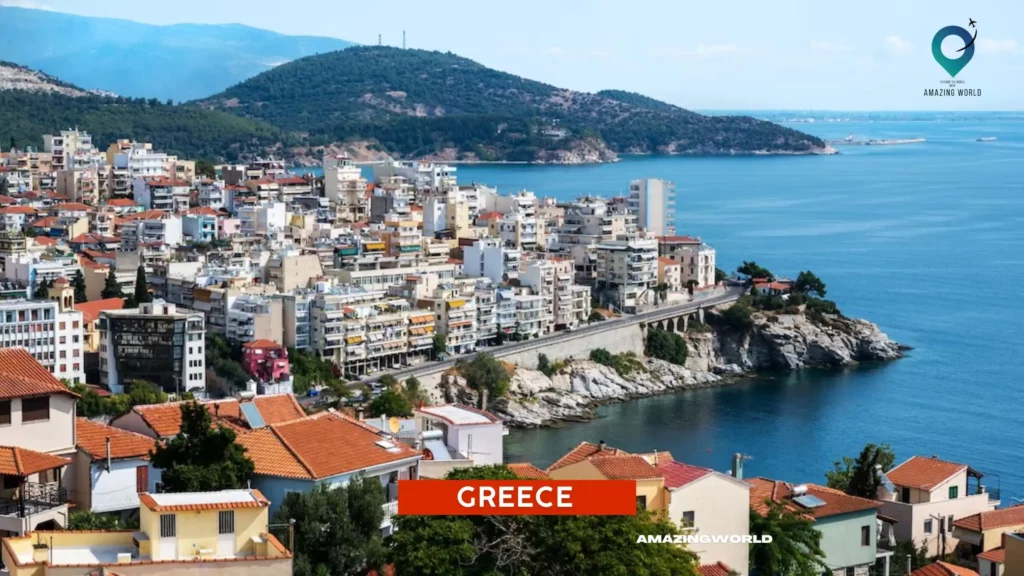
Famous Places:
- Athens: The capital city of Greece is known for its ancient landmarks like the Acropolis and the Parthenon, as well as museums and bustling neighborhoods.
- Santorini: A popular island destination with stunning views of the Aegean Sea, whitewashed buildings, and picturesque villages.
- Mykonos: Another popular island destination known for its vibrant nightlife, beautiful beaches, and charming architecture.
- Crete: The largest island in Greece with a mix of beaches, mountains, and historical sites.
- Meteora: A UNESCO World Heritage Site with stunning rock formations and monasteries perched atop them.
Most Known For:
Greece is known for its rich history, art, and culture, with a legacy that spans thousands of years. It’s also known for its beautiful islands and beaches, delicious cuisine, and warm hospitality.
Best Way to Commute:
Public transportation in Greece can be a bit limited, so renting a car or scooter can be a good way to get around.
Taxis and buses are also available, and ferries are often used to get between the islands.
Country Safety Ranking:
Greece is generally considered a safe country for tourists. The U.S. State Department rates it as a Level 2 (“Exercise Increased Caution”) due to the risk of terrorism and occasional political unrest.
Per Day Cost or 7-Day Complete Trip Cost:
- The cost of a trip to Greece can vary depending on the time of year, the type of accommodations and activities, and the number of islands visited. On average, a budget traveler can expect to spend around 50-70 euros per day, while a mid-range traveler may spend 100-150 euros per day.
- A 7-day trip could cost anywhere from 500 euros to 3000 euros or more, depending on the factors mentioned above.
Best Time to Visit:
The best time to visit Greece is typically between April and October, when the weather is warm and sunny. July and August are the busiest months and can be very crowded, while the shoulder seasons of April-May and September-October can offer good weather and fewer crowds.
Things to Avoid:
- It’s generally best to avoid drinking tap water in Greece and stick to bottled water.
- Visitors should also be aware of pickpocketing and petty theft in crowded areas like markets and public transportation.
Things to Do:
- Visit the Acropolis and other ancient landmarks in Athens
- Take a boat tour of the islands
- Explore the charming villages and beaches of Santorini and Mykonos
- Try the delicious Greek cuisine, including fresh seafood and traditional dishes like moussaka and souvlaki
- Visit the monasteries of Meteora
- Go hiking or swimming in the stunning natural scenery of Crete
Travel Tips:
- Learn a few basic Greek phrases to help with communication
- Bring comfortable shoes for walking on cobblestone streets and climbing stairs
- Be prepared for occasional strikes or transportation disruptions
- Try to avoid peak tourist season, if possible, to save money and avoid crowds
Affordability Rating or Ranking:
Greece is generally considered an affordable travel destination, with a lower cost of living compared to many other European countries.
Pros and Cons:
Pros:
Rich history and culture, stunning natural scenery, beautiful islands and beaches, delicious cuisine, affordable prices.
Cons:
Crowded and busy in peak season, occasional strikes and transportation disruptions, limited public transportation options
18. Sweden

Famous Places in Sweden:
- Stockholm – the capital city of Sweden, known for its beautiful archipelago, Gamla Stan (Old Town), and museums like the Vasa Museum and ABBA Museum.
- Gothenburg – a charming city on the west coast of Sweden, known for its canals, parks, and seafood.
- Malmö – a coastal city in the south of Sweden, known for its beaches, parks, and Turning Torso skyscraper.
- Swedish Lapland – the northern part of Sweden that is home to the Sami people, and popular for activities like skiing, dog sledding, and seeing the Northern Lights.
- Visby – a medieval town on the island of Gotland, known for its well-preserved city walls and buildings.
Most known for:
Sweden is known for its stunning natural landscapes, progressive social policies, and contributions to design and innovation. Some things Sweden is famous for include ABBA, IKEA, Volvo, and the Nobel Prize.
Best way to commute:
Sweden has an efficient and reliable public transportation system, with options like buses, trains, and trams available in most cities.
In Stockholm, the metro system (T-bana) is a convenient and popular way to get around. Bicycling is also a popular way to commute, with bike lanes available in many cities.
Country safety ranking:
Sweden is generally considered a safe country, with a low crime rate and effective emergency services.
However, like any country, it’s important to take precautions to avoid petty theft or other crimes.
Per-day cost or 7-day complete trip cost:
The cost of a trip to Sweden can vary depending on factors like time of year, location, and type of accommodations. On average, budget travelers can expect to spend around 700-1000 SEK ($80-$115 USD) per day, while mid-range travelers can expect to spend around 1500-2000 SEK ($170-$230 USD) per day.
A 7-day trip to Sweden could cost anywhere from $800-$3000 USD depending on the level of luxury and activities chosen.
Best Time to Visit:
The best time to visit Sweden depends on what you are looking for. If you want to enjoy the country’s natural beauty and outdoor activities, then summer (June-August) is the best time to visit.
If you’re interested in winter sports and activities, then December-February is the best time to visit. The shoulder seasons of spring (March-May) and autumn (September-November) offer lower prices and fewer crowds.
Things to Do:
- Explore Stockholm’s Old Town (Gamla Stan)
- Visit the Vasa Museum in Stockholm to see the well-preserved 17th-century ship
- Take a boat tour of the Stockholm archipelago
- Visit the Abisko National Park in the north to see the Northern Lights
- Go skiing or snowboarding in the winter at one of the country’s many ski resorts
- Visit the Icehotel in Jukkasjärvi, where you can sleep in a room made entirely of ice
- Experience the famous Swedish sauna culture
Things to Avoid:
Sweden is a safe country, but it’s still important to be aware of your surroundings and take precautions to avoid pickpocketing or other petty crimes in tourist areas.
Additionally, smoking is banned in all indoor public places, including bars and restaurants.
Travel Tips:
- Sweden is a cashless society, so be prepared to pay with a credit or debit card.
- Public transportation is efficient and reliable, but it can be expensive, so consider getting a travel card or pass.
- Swedes value personal space and privacy, so avoid standing too close to people on public transportation or engaging in loud conversations in public.
- Tipping is not required, as service charges are often included in the bill.
- Swedes are environmentally conscious, so be mindful of your energy and water use.
Affordability Rating:
Sweden is generally considered an expensive country to visit, with high costs for food, accommodations, and transportation.
However, there are ways to save money, such as staying in hostels or camping, cooking your own meals, and using public transportation.
Pros & Cons
Pros
- Beautiful natural scenery
- Rich cultural heritage
- Safe and well-organized
- Advanced public transportation system
- Outdoor activities year-round
Cons:
- High cost of living and travel
- Short daylight hours in winter
- Crowds in tourist areas during peak season
- Difficulty finding alcohol outside of licensed establishments
19. Peru
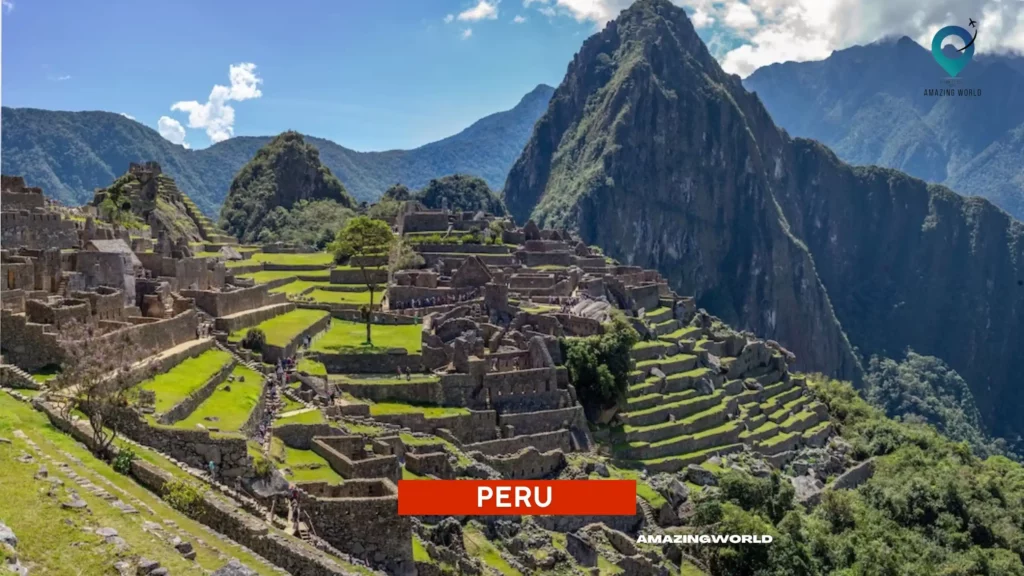
Famous Places:
- Machu Picchu: This ancient Incan city is a UNESCO World Heritage site and one of the most famous tourist attractions in South America.
- Lima: Peru’s capital city is known for its colonial architecture, museums, and vibrant food scene.
- Cusco: A historic city located near Machu Picchu, Cusco features beautiful architecture, traditional markets, and a rich cultural history.
- Lake Titicaca: The world’s highest navigable lake is located on the border of Peru and Bolivia and is known for its stunning natural beauty.
- The Amazon Rainforest: A large part of Peru is covered by the Amazon Rainforest, which offers incredible biodiversity and unique cultural experiences.
Most Known For: Peru is known for its rich history and culture, including the Incan civilization, as well as its stunning natural beauty and diverse geography.
Best Way to Commute:
Buses are the most common way to get around in Peru, and they are relatively cheap and reliable. Taxis and ride-sharing apps are also available in major cities.
Country Safety Ranking:
Peru has a moderate safety ranking, and travelers should take common-sense precautions to avoid theft and scams.
Per Day Cost or 7-Day Complete Trip Cost:
Per-day costs in Peru can range from budget to mid-range, with accommodations, food, and activities all varying in price.
A seven-day trip could cost anywhere from $500 to $1500 USD, depending on travel style and activities.
Best Time to Visit:
The best time to visit Peru is during the dry season, which runs from May to October. This is the busiest tourist season, so travelers should plan accordingly.
Things to Avoid:
Travelers should avoid drinking tap water and be cautious when eating street food. It’s also important to be aware of pickpocketing and scams in tourist areas.
Things to Do:
In addition to visiting Machu Picchu and other famous sites, travelers can also explore the Amazon Rainforest, hike through the Andes mountains, try traditional Peruvian food, and learn about the country’s history and culture.
Some Travel Tips:
It’s important to acclimate to the high altitude in Peru, especially in cities like Cusco. Travelers should also research and book tours and transportation in advance to avoid scams and overcharging.
Learning some basic Spanish can also be helpful for navigating the country.
Affordability Rating or Ranking:
Peru is considered a budget-friendly destination, with many affordable options for food, accommodations, and activities.
Pros:
- Rich history and culture
- Stunning natural beauty
- Affordable prices
Cons:
- Moderate safety ranking
- Altitude sickness can be an issue for some travelers
- Tourist scams and overcharging can be a problem in some areas.
20. Netherlands
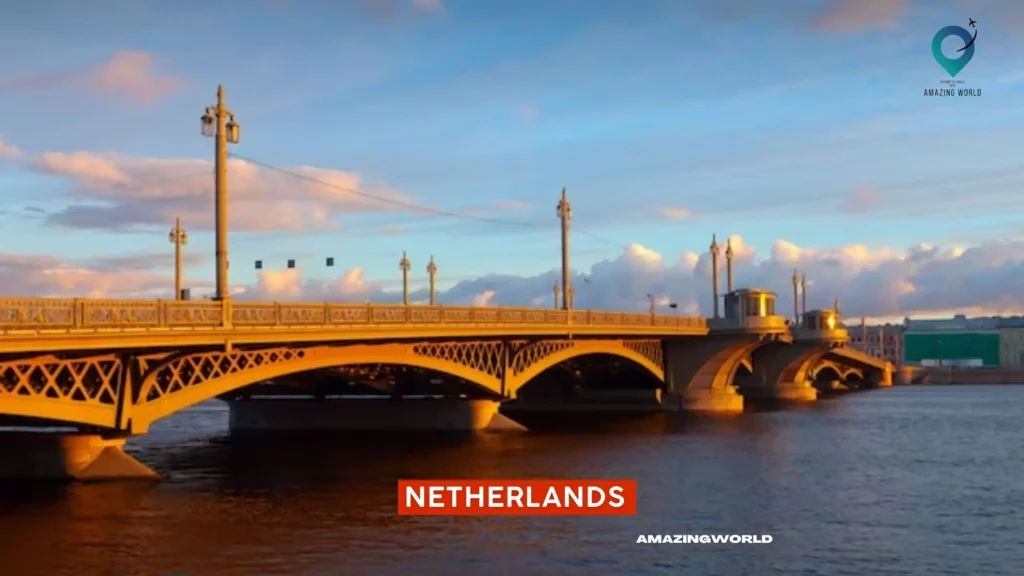
Famous places in the Netherlands:
- Amsterdam: Known for its picturesque canals, museums, coffee shops, and nightlife.
- Keukenhof: One of the world’s largest flower gardens, located in Lisse.
- The Hague: Home to the International Court of Justice, the Peace Palace, and the Binnenhof parliament buildings.
- Rotterdam: A modern city with impressive architecture, port, and museums.
- Utrecht: A historic city with a beautiful medieval center and several museums.
Most known for:
The Netherlands is known for its picturesque landscapes, tulip fields, windmills, cycling paths, and liberal culture.
Best way to commute:
The Netherlands has an extensive public transportation network, including trains, trams, buses, and metros, making it easy to get around. Cycling is also a popular mode of transport, with dedicated cycle paths and bike rental options available in most cities.
Country safety ranking:
The Netherlands is generally considered a safe country for tourists, with a Global Peace Index ranking of 10 out of 163 countries.
Per day cost or 7-day complete trip cost:
The cost of travel in the Netherlands can vary depending on factors like accommodation, food, and activities. On average, budget travelers can expect to spend around 50-80 euros per day, while mid-range travelers can expect to spend around 80-150 euros per day.
A 7-day trip can cost anywhere between 500-1500 euros, depending on your travel style.
Best time to visit:
The best time to visit the Netherlands is during the spring (April to May) when the tulips are in bloom, or during the summer (June to August) when the weather is warm and many outdoor events take place.
Things to avoid: It’s best to avoid visiting the red-light district in Amsterdam alone at night, and it’s important to be aware of pickpockets in crowded areas.
Things to do:
Some popular activities in the Netherlands include visiting museums like the Rijksmuseum and Van Gogh Museum in Amsterdam, cycling through the countryside, exploring the Keukenhof Gardens, and taking a canal tour in Amsterdam.
Some travel tips:
- Be sure to have cash on hand, as some small shops and restaurants may not accept credit cards.
- Take advantage of the country’s public transportation system to save money and get around efficiently.
- Try local food specialties like stroopwafels, bitterballen, and poffertjes.
- If you plan on visiting multiple museums, consider purchasing a Museumkaart, which provides free entry to most museums in the Netherlands.
Affordability rating or ranking:
The Netherlands can be considered a moderately expensive destination for travelers, with a cost of living higher than some other European countries.
Pros:
- Beautiful landscapes and picturesque cities
- Excellent public transportation system
- Liberal culture and friendly people
- Rich history and cultural heritage
- Multilingual population, with English widely spoken
Cons:
- Can be expensive compared to some other European destinations
- Crowded in tourist areas
- Weather can be unpredictable and rainy
21. Denmark
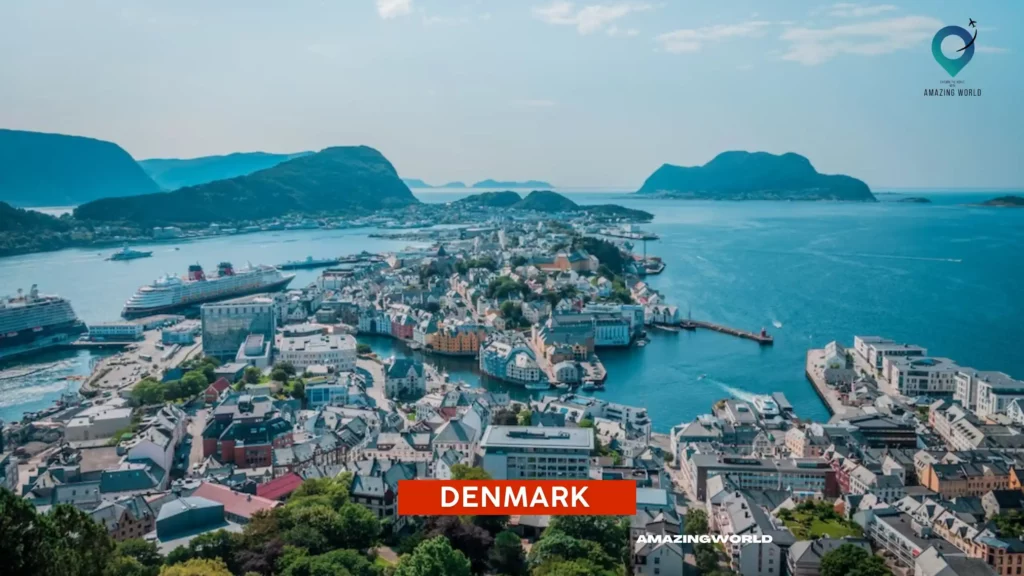
Famous places in Denmark:
- Tivoli Gardens, Copenhagen
- Nyhavn, Copenhagen
- The Little Mermaid statue, Copenhagen
- Kronborg Castle, Helsingør
- Legoland Billund
Most known for:
- Danish design
- The concept of ‘hygge’ (coziness)
- Biking culture
- Delicious pastries and food
- Being the birthplace of Lego
Best way to commute:
The best way to commute within Denmark is by using public transportation, especially trains, and buses. Denmark has an extensive public transport system that covers most of the country.
Cycling is also a popular means of transport, and you can easily rent a bike in most cities.
Country Safety ranking:
Denmark is considered to be one of the safest countries in the world, with a low crime rate and a high level of security. It is ranked 5th on the Global Peace Index, which measures the level of peace and security in different countries.
Per day cost, or 7-day complete trip cost:
- The cost of a trip to Denmark can vary depending on your travel style and preferences. On average, you can expect to spend around 1,200-1,500 DKK per day ($190-240 USD) for mid-range travel, including accommodation, food, and activities.
- A 7-day trip can cost around 8,400-10,500 DKK ($1,340-1,680 USD) per person.
Best time to visit:
The best time to visit Denmark is during the summer months (June-August) when the weather is mild and there are plenty of outdoor activities and events.
However, be prepared for crowds and higher prices during this time. Spring (April-May) and fall (September-October) are also good times to visit, with fewer crowds and lower prices.
Things to avoid:
- Avoid being loud or obnoxious in public spaces as it is considered impolite.
- Do not jaywalk, as the Danish police are strict about traffic rules.
- Avoid driving in Copenhagen city center, as it can be challenging to navigate and park.
- Do not litter, as Denmark has strict environmental policies.
Things to do:
- Visit Tivoli Gardens, the oldest amusement park in the world
- Take a bike ride around Copenhagen
- Explore the colorful Nyhavn harbor
- Visit Kronborg Castle, the inspiration for Shakespeare’s ‘Hamlet’
- Enjoy Danish pastries and traditional Danish cuisine
Some travel tips related to Denmark:
- Denmark is a cashless society, so make sure you have a credit or debit card with you.
- Tipping is not expected in Denmark, as service charges are usually included in the bill.
- If you plan to travel by train, book your tickets in advance to get cheaper prices.
- If you plan to visit several attractions, consider buying a Copenhagen Card, which includes free admission to many attractions and free public transportation.
Affordability rating or ranking:
Denmark is known for being an expensive country, with a high cost of living and high prices for food, accommodation, and activities. However, with careful planning and budgeting, it is possible to have an affordable trip to Denmark.
Pros and cons:
Pros:
- Safe and secure
- Beautiful architecture and design
- Great food and drink
- Biking culture
- High quality of life
Cons:
- Expensive
- Crowded during peak tourist season
22. Cambodia

Famous places in Cambodia:
- Angkor Wat: This UNESCO World Heritage site is one of the most famous attractions in Cambodia. It is a massive temple complex built in the 12th century and is known for its stunning architecture and intricate carvings.
- Phnom Penh: The capital city of Cambodia is home to many important cultural and historical sites, including the Royal Palace and the Killing Fields memorial.
- Siem Reap: This city is located near the Angkor Wat temple complex and is a popular destination for tourists. It offers a range of accommodation options and is a good base for exploring the surrounding area.
- Sihanoukville: Located on the coast, Sihanoukville is a popular beach destination with several beautiful beaches and islands to explore.
- Kampot: This small town is known for its beautiful riverside location and is a good base for exploring the nearby Bokor National Park.
Most known for:
Cambodia is known for its rich history and culture, including the Angkor Wat temple complex, traditional dance performances, and Khmer cuisine.
Best way to commute:
The most popular way to travel around Cambodia is by tuk-tuk or motorcycle taxi. There are also buses and private taxis available for longer journeys.
Country Safety ranking:
Cambodia has a moderate safety ranking. Visitors should take precautions to avoid petty crime and be aware of scams targeting tourists.
Per day cost, or 7-day complete trip cost:
The cost of travel in Cambodia can vary depending on the type of accommodation and activities you choose. A budget traveler can expect to spend around $30-$50 per day, while a mid-range traveler can expect to spend around $70-$100 per day.
A 7-day trip to Cambodia can cost anywhere from $200 to $1000, depending on your travel style and itinerary.
Best time to visit:
The best time to visit Cambodia is from November to February when the weather is dry and cool.
However, this is also the busiest time of year, so expect crowds and higher prices.
Things to avoid:
Visitors should avoid wearing revealing clothing when visiting temples or other religious sites. It is also important to be aware of scams targeting tourists, such as overpriced tuk-tuk rides or fake tour guides.
Things to do:
Some popular things to do in Cambodia include visiting the Angkor Wat temple complex, exploring Phnom Penh’s historical sites, relaxing on the beaches in Sihanoukville, and trying local Khmer cuisine.
Some travel tips:
When visiting temples or other religious sites, it is important to dress modestly and remove your shoes before entering.
Visitors should also be aware of the potential for petty crime and take precautions to protect their valuables.
Affordability rating or ranking:
Cambodia is considered an affordable destination for travelers, with a relatively low cost of living and a range of budget-friendly accommodation and dining options.
Pros and cons:
- Some pros of traveling to Cambodia include its rich history and culture, affordable prices, and beautiful natural scenery.
- However, visitors should be prepared for potential safety risks and be aware of scams targeting tourists.
23. South Korea

South Korea is a popular destination for tourists, known for its rich cultural heritage, stunning natural landscapes, and modern cities. Here is a breakdown of some key points to consider when traveling to South Korea:
Famous places in the country:
- Seoul, the bustling capital city with ancient palaces, skyscrapers, and vibrant nightlife.
- Jeju Island, a volcanic island with beautiful beaches, waterfalls, and caves.
- Gyeongju, the ancient capital of the Silla Dynasty, known for its temples, tombs, and historical sites.
- Busan, a coastal city with beaches, seafood markets, and mountain hikes.
- Andong, a traditional town known for its mask dances and historic houses.
- Most known for: South Korea is known for its technology, K-pop music, delicious food, and traditional cultural practices such as taekwondo and hanbok (traditional clothing).
Best way to commute:
South Korea has an efficient and affordable public transportation system, including buses, subways, and trains. Taxis are also readily available, and ridesharing services like Uber and Kakao Taxi are popular.
Country Safety ranking:
South Korea is generally considered a safe country to travel to. It has a relatively low crime rate and a high standard of living.
Per day cost or 7-day complete trip cost:
The cost of traveling to South Korea can vary depending on your travel style and itinerary. On average, a mid-range traveler can expect to spend around $80-100 per day.
A 7-day complete trip cost could range from $560-700.
Best time to visit:
- The best time to visit South Korea is during the spring (March to May) and fall (September to November) when the weather is mild and the scenery is beautiful.
- Summer (June to August) can be hot and humid, while winter (December to February) can be cold and snowy.
Things to avoid:
It is important to be respectful of local customs and etiquette in South Korea. For example, it is considered rude to blow your nose in public, and it is important to remove your shoes before entering someone’s home.
Things to do:
There are plenty of things to do in South Korea, from exploring ancient temples and palaces to hiking in national parks and trying delicious local cuisine.
Some popular activities include visiting the Gyeongbokgung Palace, shopping in Myeong-dong, and hiking in Seoraksan National Park.
Some travel tips:
- It is a good idea to learn some basic Korean phrases before traveling to South Korea, as English is not widely spoken.
- Additionally, be sure to try local delicacies like bulgogi and kimchi, and be aware that South Korea is a relatively conservative country, so dress modestly when visiting religious sites.
Affordability rating or ranking:
South Korea is considered a mid-range to high-cost destination, with prices generally higher than neighboring countries like China and Vietnam but lower than Japan.
Pros: South Korea is a safe and modern country with a unique blend of ancient traditions and modern technology. The food is delicious, the scenery is stunning, and there is plenty to see and do.
Cons: South Korea can be crowded and busy, and the language barrier can be a challenge for some travelers. Additionally, some visitors may find the cultural differences to be overwhelming at first.
24. Estonia

Famous Places:
- Tallinn Old Town: This medieval city is a UNESCO World Heritage site and a popular tourist destination with its charming cobblestone streets, colorful buildings, and beautiful churches.
- Lahemaa National Park: Located on the northern coast, this park offers stunning coastal scenery, forests, and lakes, and is a great place for hiking and wildlife watching.
- Saaremaa Island: This large island is known for its unique culture, beautiful beaches, and historic castles.
- Pärnu: Known as Estonia’s “summer capital”, Pärnu is a popular beach resort town with a charming old town and plenty of restaurants and cafes.
- Kumu Art Museum: Estonia’s largest art museum, showcasing Estonian art from the 18th century to the present day.
Most known for:
- Digital innovation: Estonia is a leader in e-government and is known for its advanced digital infrastructure, including a national ID system and e-voting.
- Song and dance festivals: Estonia’s tradition of large-scale song and dance festivals dates back to the 19th century and is an important part of the country’s cultural heritage.
Best way to commute:
Public transportation, including buses and trams, is widely available in cities like Tallinn. Taxis and ride-sharing services are also available. To explore the countryside, renting a car is a good option.
Country Safety ranking:
Estonia is generally considered a safe country for tourists, with a low crime rate. Petty theft can occur in tourist areas, so it’s important to take standard safety precautions.
Per day cost, or 7-day complete trip cost:
- The cost of travel in Estonia can vary depending on the type of accommodation, dining, and activities. On average, a budget traveler can expect to spend around €40-50 per day, while mid-range travelers can expect to spend around €70-100 per day.
- A 7-day trip can cost around €400-700 for a budget traveler, and €700-1400 for a mid-range traveler.
Best time to visit:
The best time to visit Estonia is during the summer months from June to August, when the weather is mild and there are plenty of outdoor activities and events.
The winter months can be cold and dark, but are also a great time to visit for winter sports and holiday festivities.
Things to avoid:
- Drinking tap water in rural areas, as it may not be safe for consumption.
- Taking unlicensed taxis.
Things to do:
- Explore Tallinn Old Town and its many museums and historical sites.
- Visit Lahemaa National Park for hiking and wildlife watching.
- Enjoy the beaches and spas in Pärnu.
- Take a day trip to Saaremaa Island for its unique culture and natural beauty.
- Attend a traditional song and dance festival.
Travel tips:
- Estonia is part of the Schengen Area, so visitors from other Schengen countries do not need a visa to enter.
- English is widely spoken, especially in tourist areas.
- Tipping is not expected in Estonia, but rounding up the bill or leaving a small tip is appreciated.
- Estonia is a cashless society, so credit cards are widely accepted and often preferred over cash.
Affordability rating or ranking:
Estonia is generally considered an affordable destination compared to other European countries. It is ranked 36th out of 136 countries on the World Economic Forum’s Travel & Tourism Competitiveness Index.
Pros:
- Beautiful and historic cities like Tallinn.
- Stunning natural scenery and national parks.
- Advanced digital infrastructure and e-government.
Cons:
- Limited public transportation in rural areas.
- Can be cold and dark in the winter months.
- Limited options for international cuisine outside of major cities.
25. Malaysia
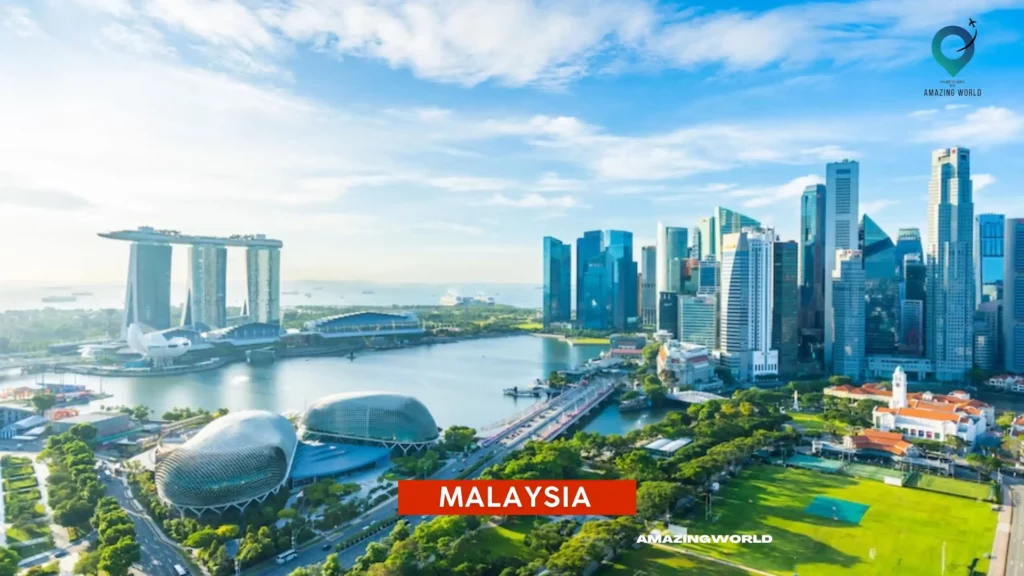
Malaysia is a Southeast Asian country known for its diverse culture, stunning beaches, lush rainforests, and delicious cuisine. Here is a breakdown of some of the key points to consider when visiting Malaysia:
Famous places in Malaysia:
- Kuala Lumpur: The capital city known for the iconic Petronas Twin Towers, as well as other attractions like the Batu Caves, Menara KL Tower, and Chinatown.
- Penang: A state in the northwest region of Malaysia known for its rich cultural heritage, street art, and mouthwatering food.
- Langkawi: An archipelago of 99 islands on the west coast of Malaysia known for its beautiful beaches, crystal-clear waters, and stunning sunsets.
- Malacca: A historic city on the southwest coast of Malaysia known for its well-preserved architecture, museums, and famous Jonker Street night market.
- Borneo: The third-largest island in the world shared by Malaysia, Indonesia, and Brunei, known for its incredible biodiversity and wildlife, including orangutans, proboscis monkeys, and pygmy elephants.
Most known for:
Malaysia is most known for its diverse culture and cuisine, which is a blend of Malay, Chinese, and Indian influences.
The country is also famous for its stunning beaches and islands, as well as its lush rainforests and abundant wildlife.
Best way to commute:
The best way to get around Malaysia depends on the destination. In cities like Kuala Lumpur, the public transportation system is extensive and efficient, with options like buses, trains, and the LRT (Light Rail Transit) and MRT (Mass Rapid Transit) systems.
In more rural areas or on islands like Langkawi, renting a car or hiring a taxi or private driver may be necessary.
Country Safety ranking:
Malaysia is generally considered a safe country for tourists, with a low crime rate.
However, visitors should still exercise caution and take common-sense safety precautions, such as being aware of their surroundings and not flashing valuable items.
Per day cost, or 7-day complete trip cost:
The cost of travel in Malaysia can vary widely depending on the destination and type of accommodations and activities. On average, budget travelers can expect to spend around RM100-150 ($25-35 USD) per day, while mid-range travelers can expect to spend around RM300-500 ($70-120 USD) per day.
A seven-day trip to Malaysia could cost anywhere from RM700-5000+ ($170-1200+ USD) per person, depending on the itinerary.
Best time to visit:
Malaysia is a year-round destination, but the best time to visit is from March to October, which is the dry season.
Things to avoid:
Malaysia is generally a safe country, but it’s always advisable to take precautions against petty crime, such as pickpocketing and theft.
It’s also important to be aware of cultural norms, such as dressing modestly when visiting places of worship.
Things to do:
Some of the top attractions in Malaysia include the Petronas Twin Towers in Kuala Lumpur, the Batu Caves, the historical city of Malacca, the Cameron Highlands, the Langkawi islands, and the Borneo rainforest.
Other popular activities include food tours, shopping, and outdoor adventures like hiking and water sports.
Travel tips:
When traveling in Malaysia, it’s important to have cash on hand as not all establishments accept credit cards. It’s also advisable to carry a copy of your passport and other important documents, and to be aware of local customs and traditions.
Tipping is not mandatory in Malaysia, but rounding up the bill or leaving a small amount is appreciated.
Affordability rating:
Malaysia is a relatively affordable destination, with a range of budget-friendly options for accommodation, dining, and activities.
Pros:
Malaysia offers a unique blend of cultures, from Malay to Chinese and Indian, with a variety of cuisines and traditions to explore.
The country is also known for its natural beauty, with tropical rainforests, idyllic islands, and stunning beaches.
Cons:
Malaysia can be quite hot and humid, especially during the summer months. The traffic and public transportation in cities like Kuala Lumpur can be congested, and some areas may be affected by pollution.
There may also be occasional political unrest or security concerns in certain regions of the country.
Some Extra Tips
How to overcome language barriers when on a solo trip
Traveling solo can be an exciting and rewarding experience, but it can also come with some challenges, such as language barriers. Here are some tips to help you overcome language barriers when you’re on a solo trip:
Learn some basic phrases: Before you go, take some time to learn a few key phrases in the local language such as “hello,” “please,” “thank you,” and “where is the bathroom.” Knowing some basic phrases will help you communicate with locals and show that you’re making an effort.
Use translation apps: There are many translation apps available that can help you translate words and phrases in real time. Some popular ones include Google Translate, iTranslate, and TripLingo. These apps can also help you communicate with locals by using the voice-to-text or text-to-voice features.
Carry a pocket dictionary: A pocket dictionary can come in handy when you don’t have access to a translation app or the internet. It may take a little longer to find the word you need, but it’s better than not being able to communicate at all.
Use non-verbal communication: Non-verbal communication such as pointing, gesturing, and using facial expressions can be a great way to get your message across. This can be especially helpful when you’re trying to communicate simple things like directions or ordering food.
Be patient and respectful: Remember that language barriers are a two-way street. If someone doesn’t understand you, try to communicate in a different way, rather than getting frustrated. Also, try to be respectful of the local culture and customs, even if you don’t fully understand them.
Join a language exchange program: If you’re planning to stay in one place for an extended period of time, consider joining a language exchange program. This will give you the opportunity to practice speaking the local language with a native speaker, and they can also help you learn more about the local culture.
Solo Travel Itineraries
Solo travel can be a liberating and exciting experience, but planning your itinerary can be overwhelming, especially if you are traveling alone for the first time. Here are some tips to help you plan a solo travel itinerary:
Research your destination: Before you start planning your itinerary, research your destination thoroughly. Learn about the local culture, customs, and traditions. Find out about local laws and regulations, as well as any safety concerns.
Decide on the length of your trip: Determine how long you want to travel for. This will help you decide on how many destinations you can visit and how much time you can spend in each.
Choose your destinations: Decide on the cities or towns you want to visit, taking into consideration factors such as travel time between destinations, transportation options, and cost.
Create a rough itinerary: Create a rough itinerary that includes the places you want to visit, the activities you want to do, and the transportation options you will use to get around. Leave room for flexibility and spontaneity, as you may want to change your plans as you go.
Book accommodation in advance: It’s a good idea to book your accommodation in advance, especially if you are traveling during peak season. This will ensure that you have a place to stay, and you can avoid the stress of trying to find a place to sleep when you arrive.
Stay connected: Make sure you have a way to stay connected with family and friends back home. This could be through a phone plan, a SIM card, or through free Wi-Fi.
Be open to meeting new people: Solo travel is a great opportunity to meet new people. Stay in hostels or take part in group tours or activities to meet other travelers.
Be mindful of your safety: When traveling alone, it’s important to be mindful of your safety. Keep your valuables secure and be aware of your surroundings. Avoid walking alone at night and stick to well-lit areas.
Take care of yourself: Solo travel can be physically and emotionally exhausting, so make sure you take care of yourself. Get enough rest, eat well, and take breaks when you need them.
Enjoy the journey: Remember that solo travel is an opportunity to explore the world on your terms. Be open to new experiences, embrace the unexpected, and enjoy the journey.
Solo Travel Community and Resources
Research online communities: Look for solo travel groups on social media platforms like Facebook, Instagram, and Twitter. You can also check travel forums like Lonely Planet’s Thorn Tree, TripAdvisor, and Reddit’s r/solotravel.
Join relevant groups: Once you’ve found some groups, join them and introduce yourself. Be sure to read the rules and guidelines of the group to ensure your posts are appropriate.
Engage with the community: Engage with other members by asking questions, offering advice, and sharing your experiences. This is a great way to build relationships with other solo travelers and gain valuable insights for your own trips.
Attend meetups: Many solo travel groups organize meetups and events, which is a great opportunity to meet other solo travelers in person. This can be especially helpful if you’re feeling lonely or want some company on your trip.
Use resources: There are many resources available for solo travelers, including travel blogs, podcasts, and books. Some popular resources include Solo Traveler, Nomadic Matt, and Lonely Planet’s Solo Travel Handbook.
Join loyalty programs: Many travel companies offer loyalty programs that provide discounts and rewards for frequent travelers. This can help make solo travel more affordable and provide additional perks like free room upgrades or airline lounge access.
Utilize travel apps: There are many travel apps available that can help with everything from booking flights and accommodation to finding local restaurants and activities. Some popular travel apps include Airbnb, Skyscanner, and TripAdvisor.
Examples of solo travel communities and resources include:
Solo Travel Society on Facebook: A community of over 225,000 solo travelers who share tips, advice, and stories.
Nomadic Matt: A popular travel blog that offers advice and resources for solo travelers.
Hostelling International: A hostel network that offers affordable accommodation options for solo travelers.
Couchsurfing: A platform that allows solo travelers to connect with locals and stay with them for free.
Travel Noire: A website and community for travelers of color that offers resources and advice for solo travel.
Worldpackers: A platform that allows solo travelers to exchange work for accommodation and experiences.
Rick Steves’ Europe Through the Back Door: A travel book that offers advice and resources for solo travel in Europe.
Conclusion
The article highlights the benefits of solo travel, including the freedom to create your own itinerary, the opportunity to meet new people and learn about different cultures, and the chance to develop independence and self-confidence. It also provides tips for solo travelers, such as researching your destination beforehand, staying aware of your surroundings, and staying connected with loved ones at home.
Additionally, the article suggests various solo travel communities and resources, including online forums and travel apps, that can help solo travelers plan their trips and connect with other like-minded individuals.
To all readers, I encourage you to share your own solo travel experiences and recommendations. Whether it’s a specific destination, a memorable moment, or a helpful tip, your insights can be valuable to others who are planning their own solo adventures. By sharing our experiences and knowledge, we can inspire and support each other in our solo travel journeys. So please feel free to leave your comments and recommendations below!
How much did you like Our detailed 25 Best Countries to Visit as Solo Travelers in 2023? Also, please share these Blogs with your friends on social media.
Recommended
Best Countries to Visit as Solo Travelers FAQ’S
Is it safe to travel alone?
Solo travel can be safe, but it’s important to take certain precautions and do your research before embarking on your trip. It’s important to be aware of your surroundings and stay alert, especially in unfamiliar places.
What are the benefits of solo travel?
Solo travel can be incredibly liberating and empowering. It allows you to be fully in charge of your own itinerary and explore destinations at your own pace. It also offers the opportunity for self-discovery and personal growth.
What are some good destinations for solo travel?
There are many destinations that are great for solo travel, including cities like Paris, Tokyo, and New York, as well as more off-the-beaten-path destinations like Bali, Costa Rica, and Iceland.
How do I plan a solo trip?
Planning a solo trip involves determining your budget, choosing a destination, booking flights and accommodations, creating an itinerary, and preparing for the unexpected.
How do I meet people while traveling alone?
There are many ways to meet people while traveling alone, including staying in hostels, taking part in group tours or activities, and joining online travel communities.
What are some tips for solo female travelers?
Tips for solo female travelers include dressing conservatively, avoiding walking alone at night, staying in reputable accommodations, and being aware of cultural norms and customs.
How do I handle loneliness while traveling alone?
Loneliness can be a challenge when traveling alone, but there are ways to combat it. This includes staying in social accommodations, joining group activities, and connecting with locals or fellow travelers.
How do I stay safe while traveling alone?
Staying safe while traveling alone involves researching your destination, staying aware of your surroundings, avoiding risky behavior, and staying in contact with loved ones.
What is some budget-friendly solo travel options?
Budget-friendly solo travel options include staying in hostels, cooking your own meals, taking public transportation, and opting for free or low-cost activities.
Is it cheaper to travel alone or with a group?
This depends on various factors, including the destination, accommodations, and activities. Traveling alone can be cost-effective if you’re willing to stay in budget accommodations and be frugal with your spending.
What should I pack for a solo trip?
When packing for a solo trip, it’s important to consider the climate, culture, and activities of your destination. This includes essentials like comfortable shoes, appropriate clothing, and travel documents.
How do I choose the best accommodation for solo travel?
When choosing accommodations for solo travel, consider factors like safety, location, and social opportunities. Hostels and guesthouses can be great options for solo travelers looking to meet others.
Should I book everything in advance or leave things open while traveling alone?
This depends on your personal preferences and travel style. Some travelers prefer to have a detailed itinerary in advance, while others like to leave things open to spontaneity.
What are some common mistakes to avoid while traveling alone?
Common mistakes to avoid while traveling alone include being too trusting of strangers, not researching your destination, and not having a backup plan for emergencies.
How do I make the most of my solo travel experience?
To make the most of your solo travel experience, embrace the opportunity for self-discovery, be open to new experiences, and stay present in the moment. Don’t be afraid to step outside of your comfort zone and try new things.

Meet David Hoper, a passionate travel Blog writer with 7+ years of experience in travel content. Through his exemplary storytelling and engaging narratives, he shares his experiences and brings destinations to life. With a keen eye for detail and a love for exploration, he has cultivated a diverse portfolio of travel blogs that inspire and inform readers worldwide.



